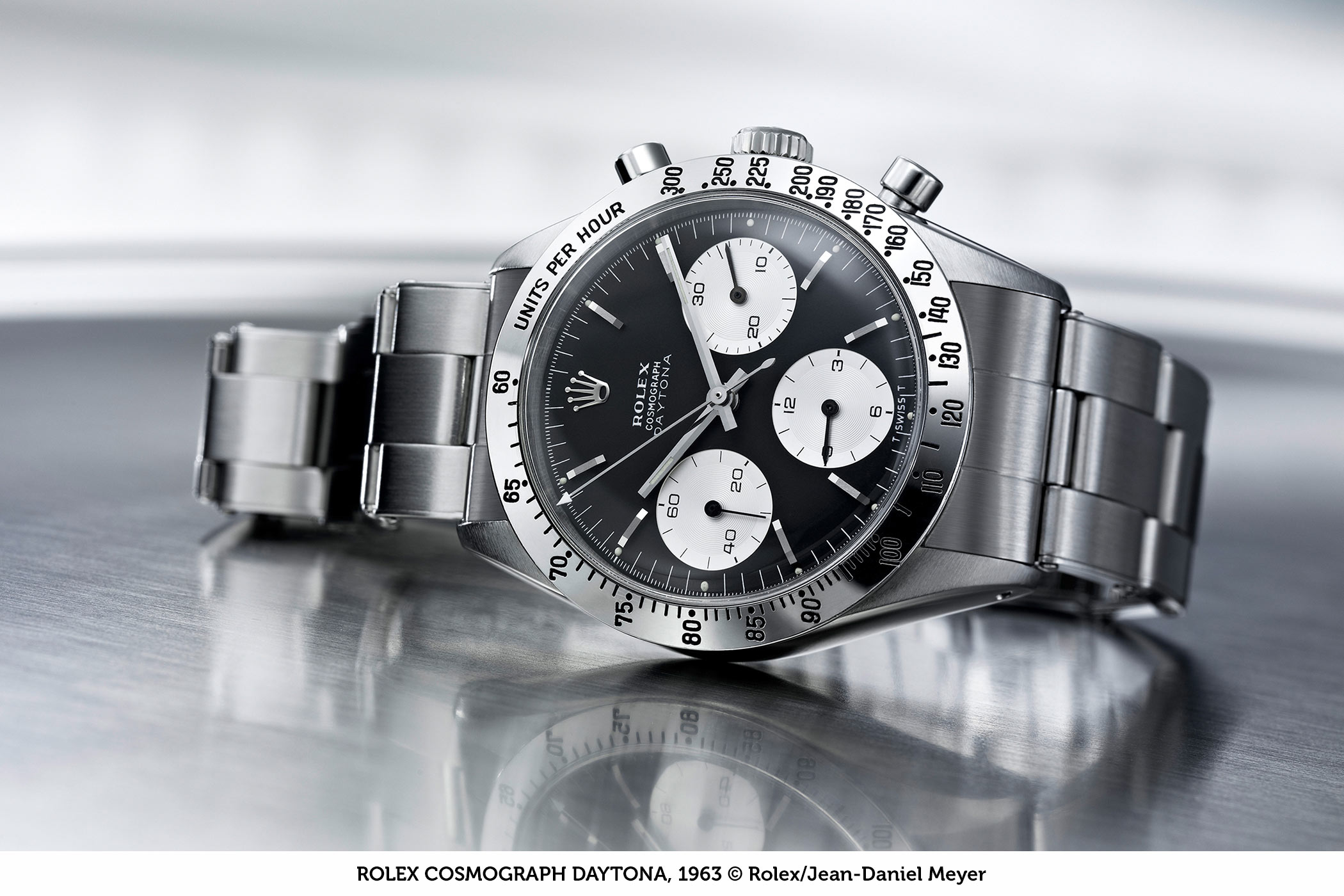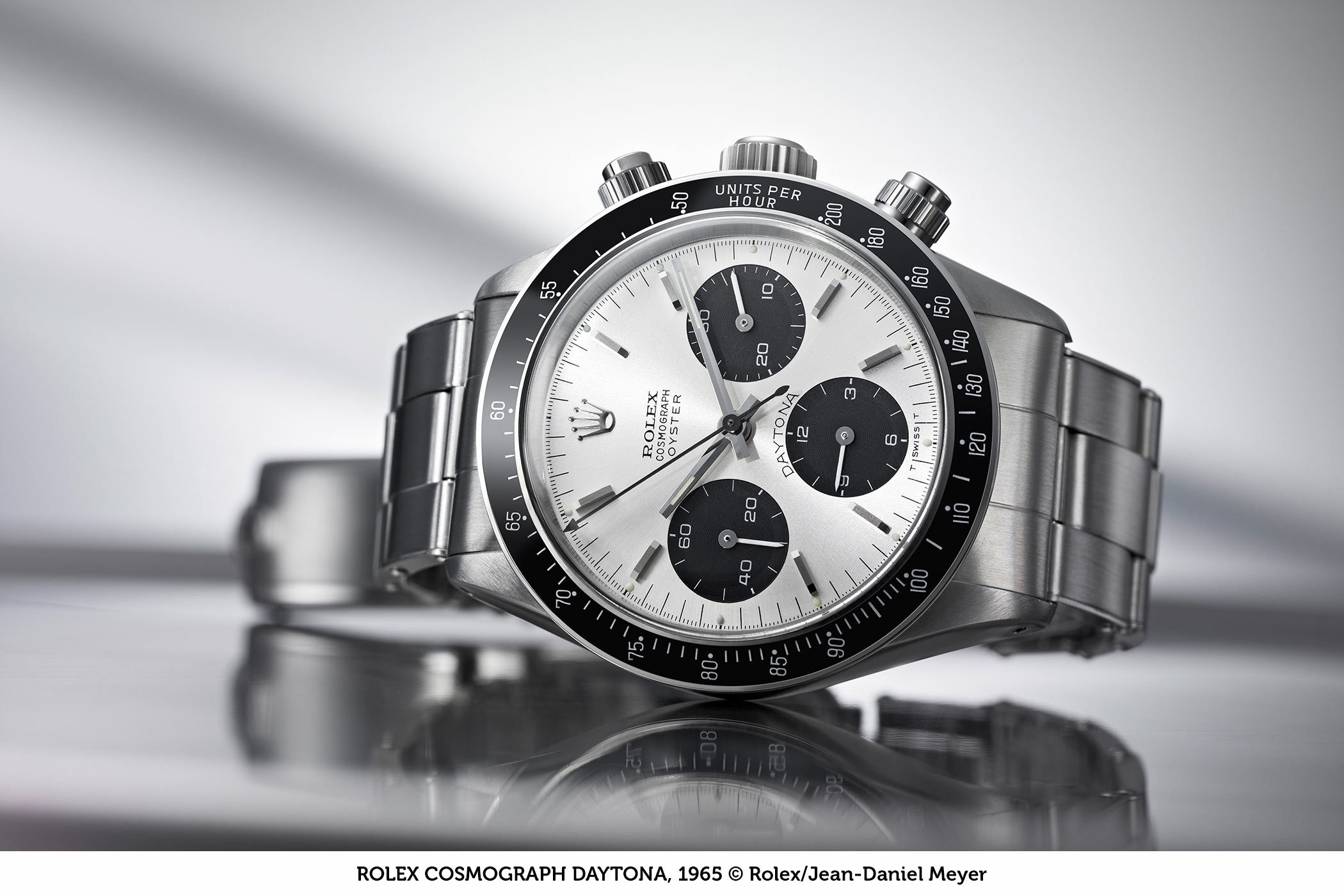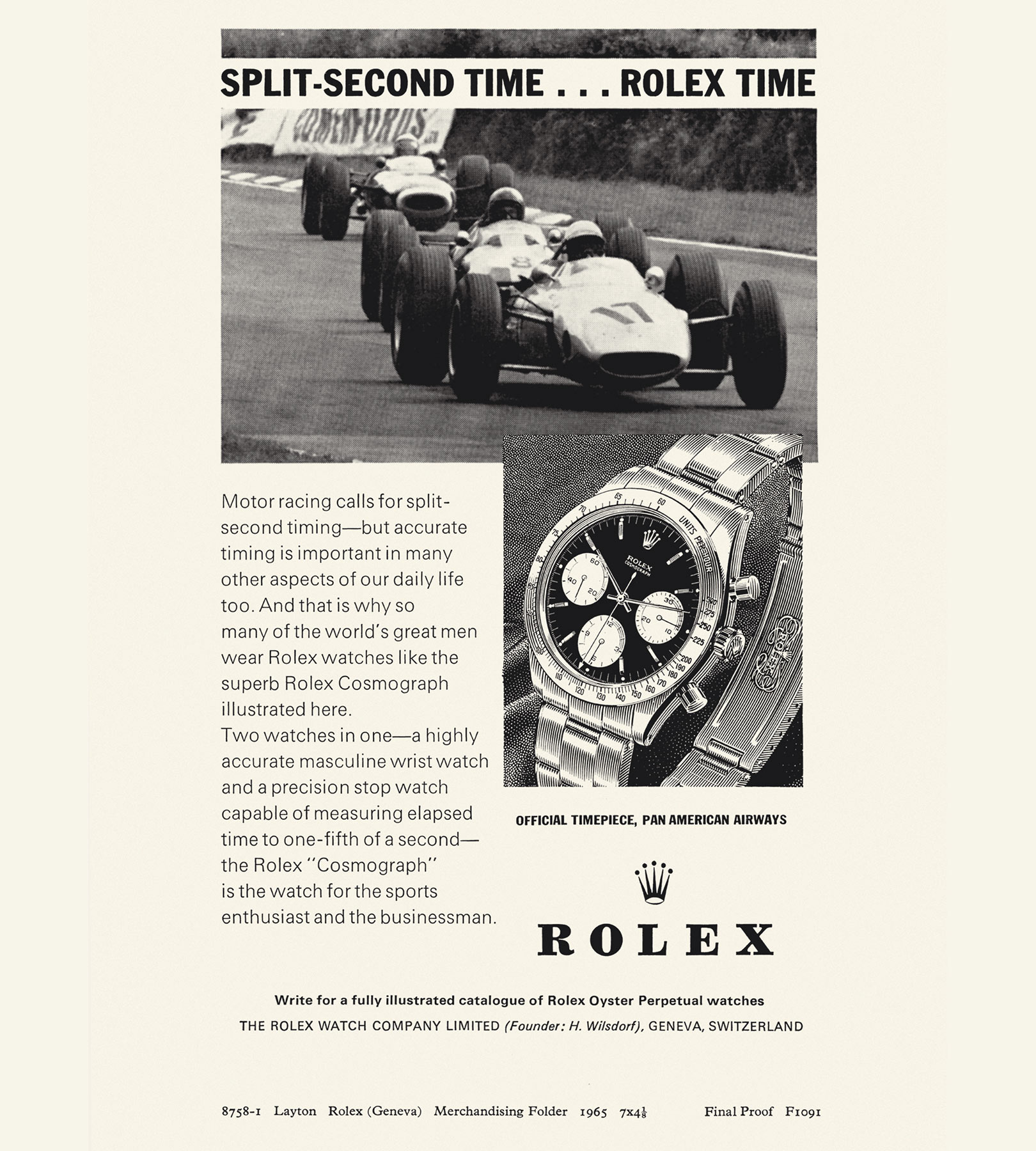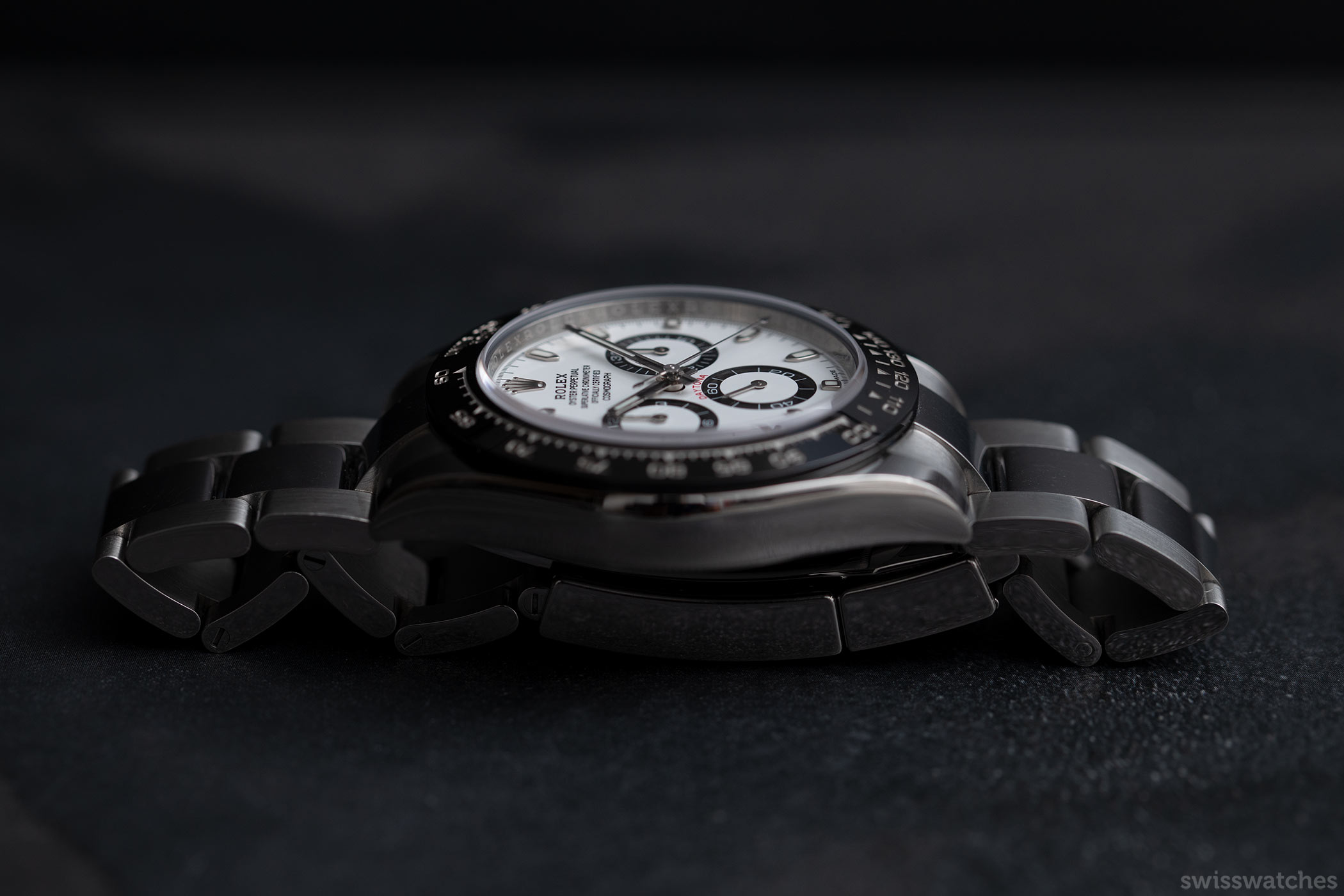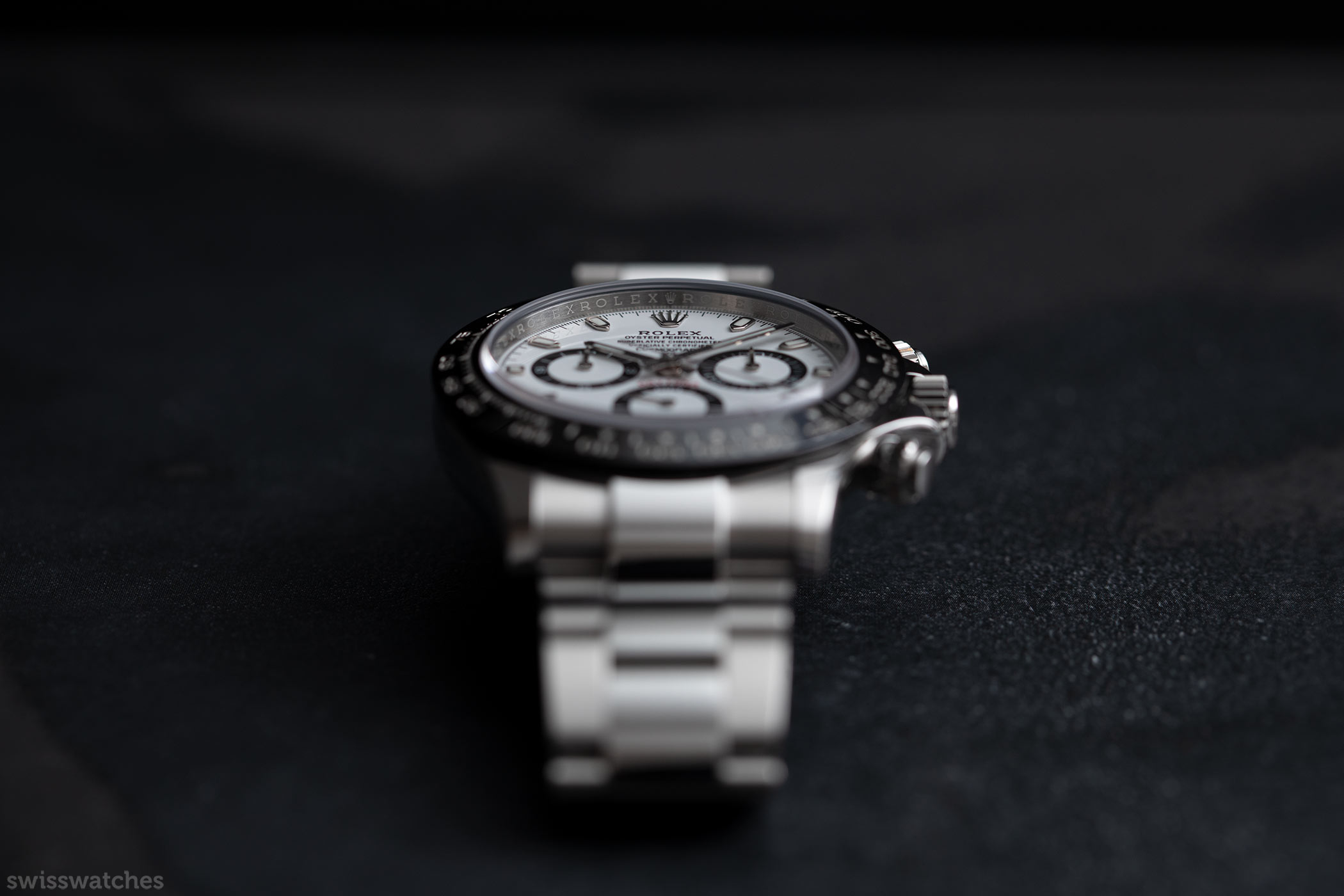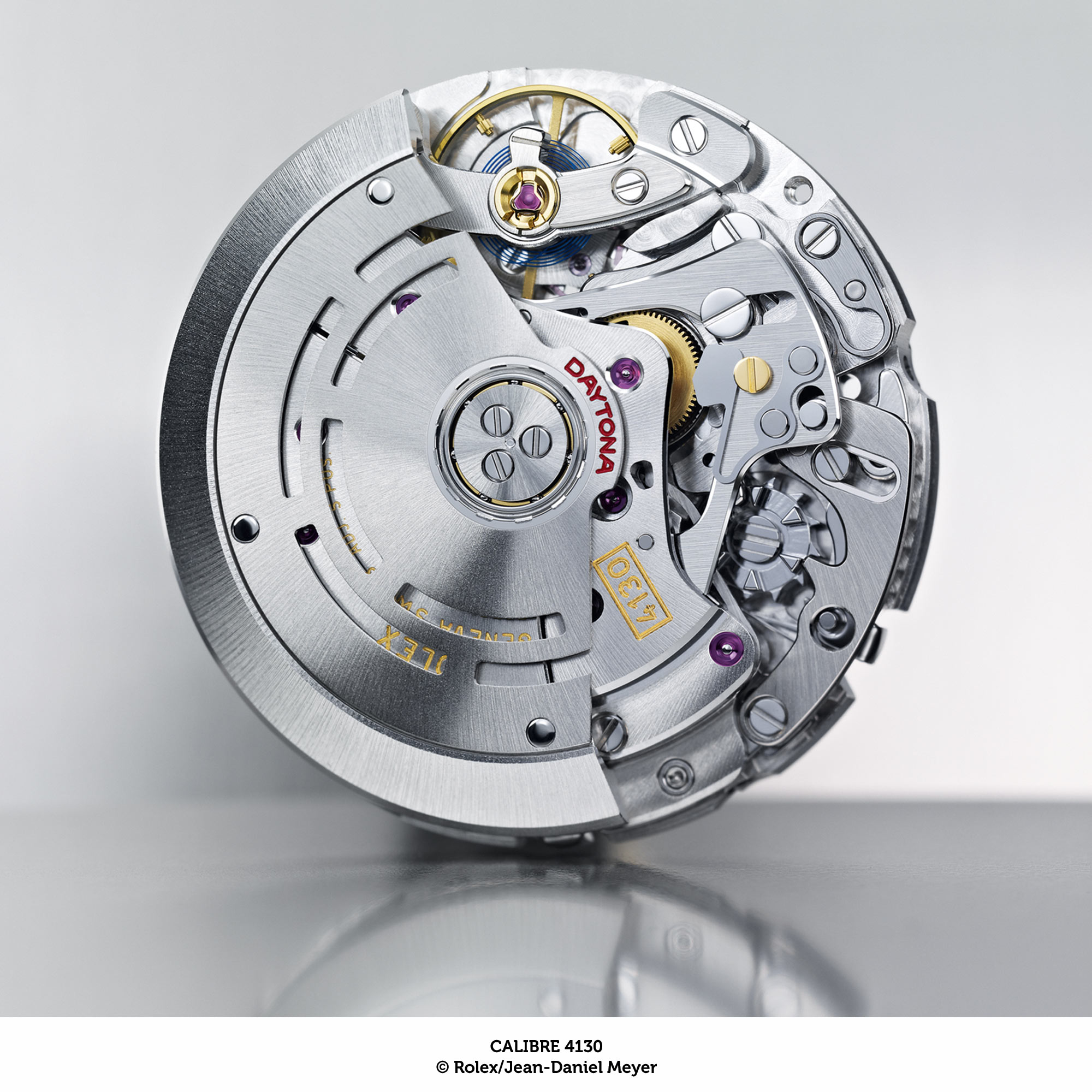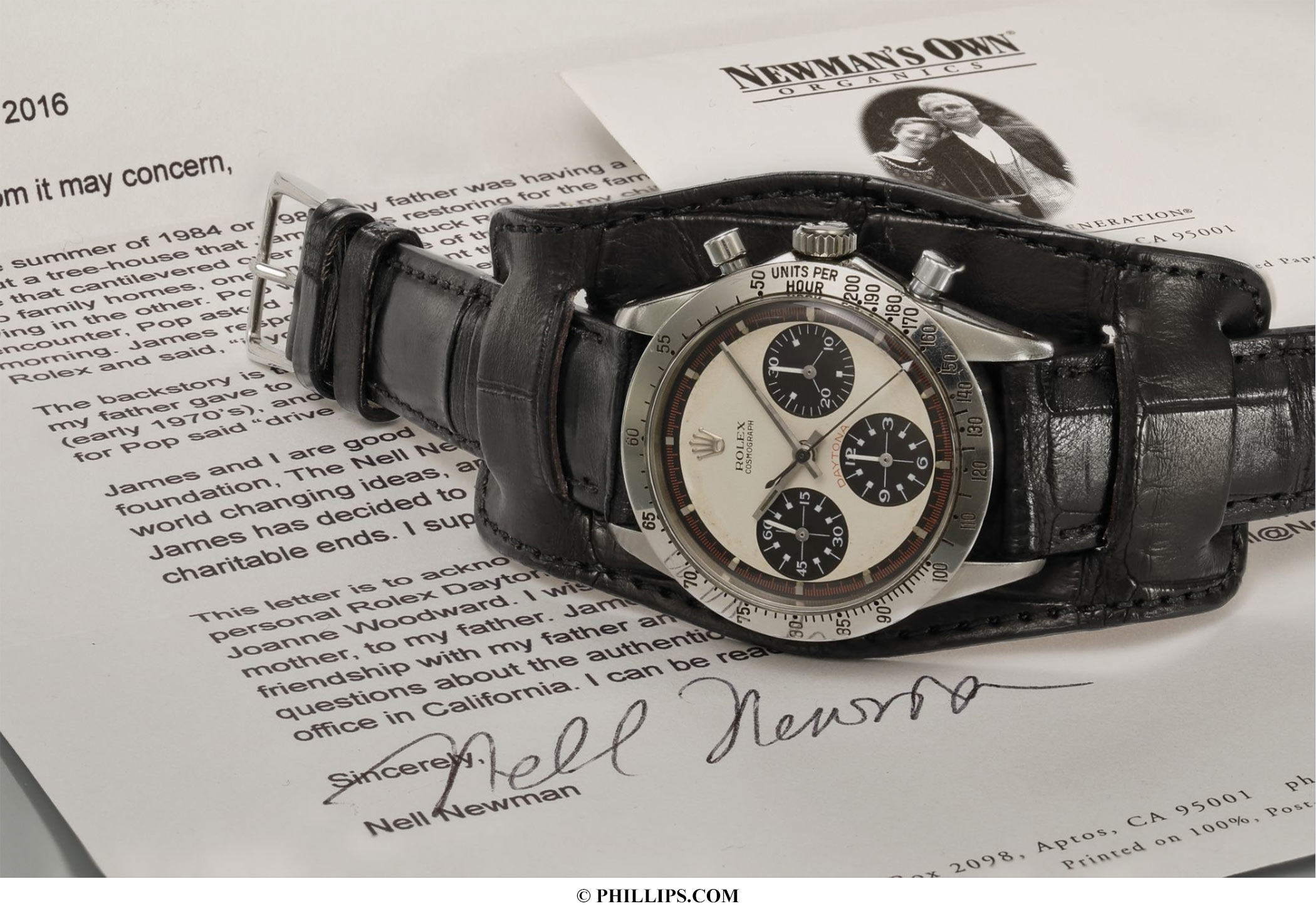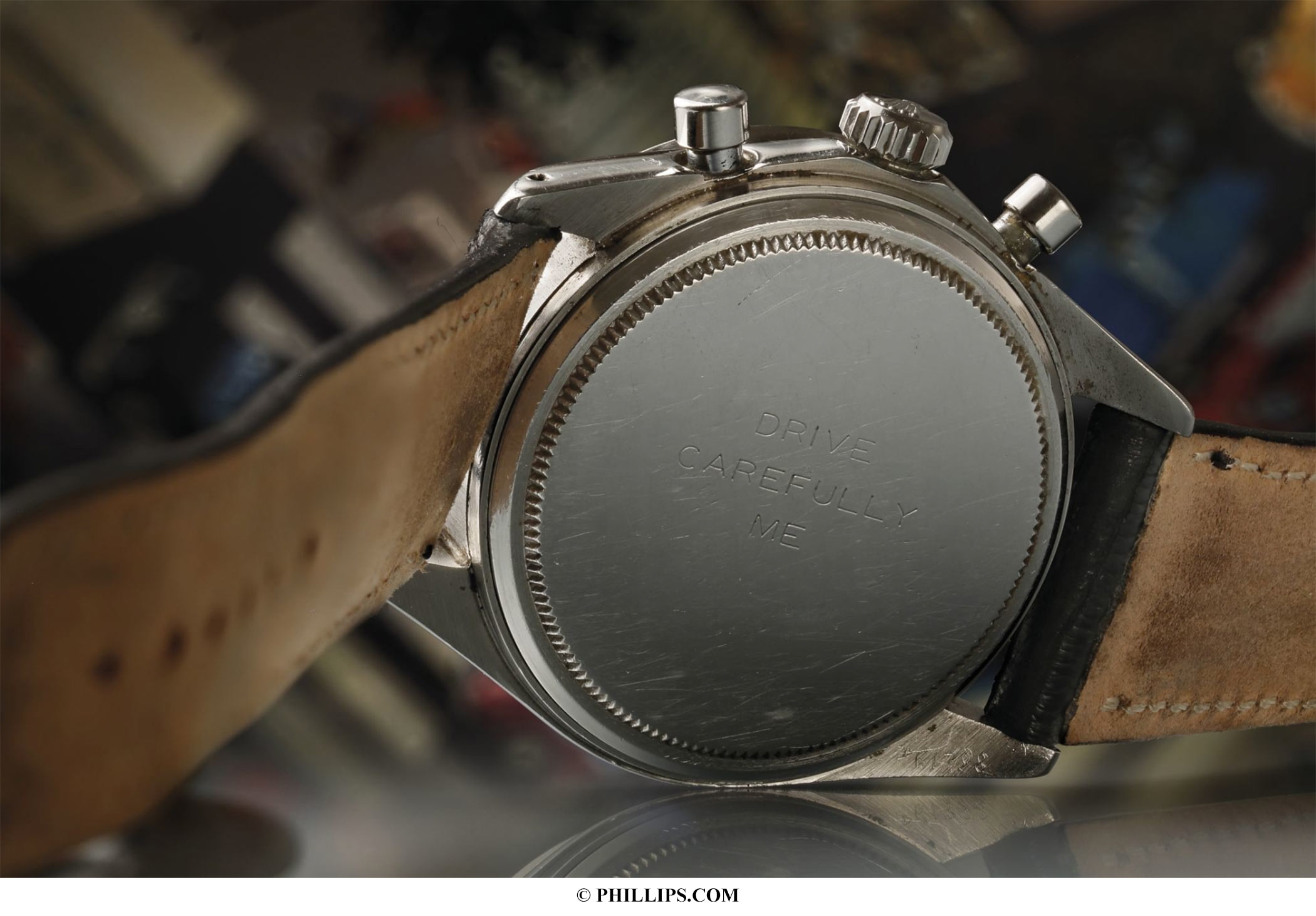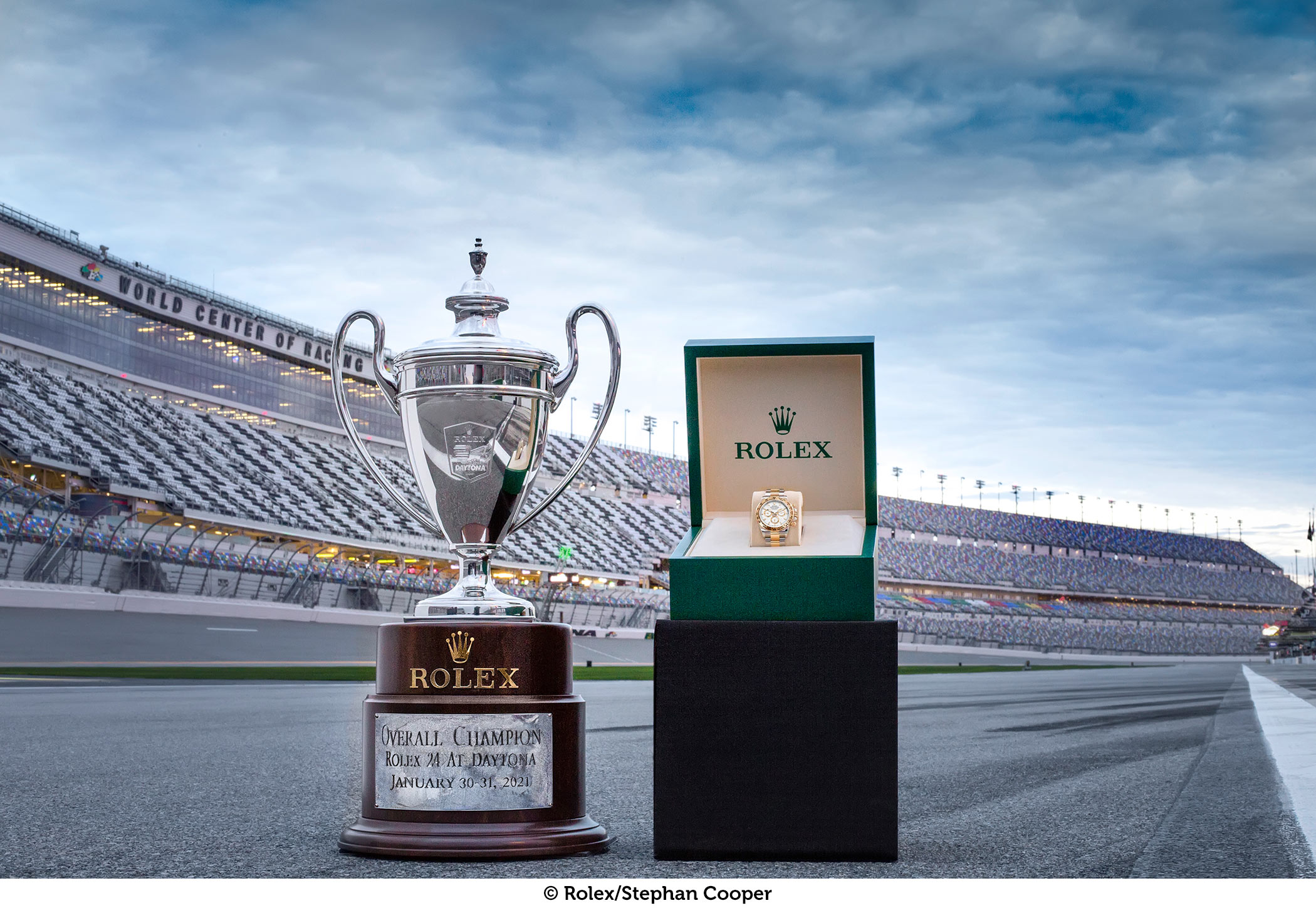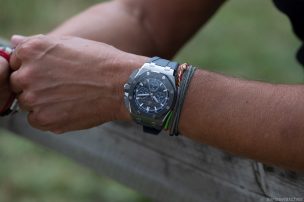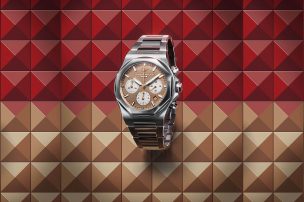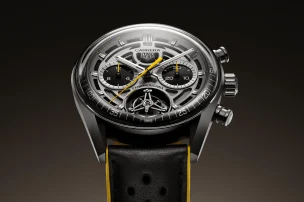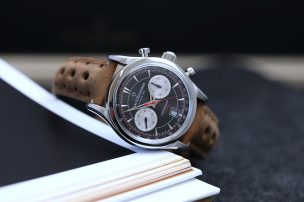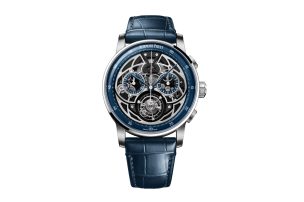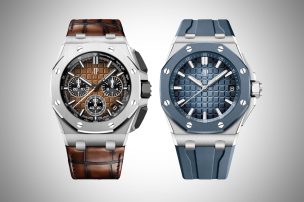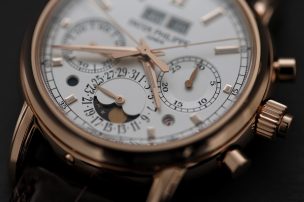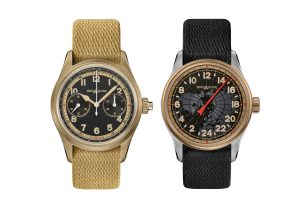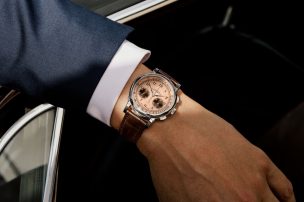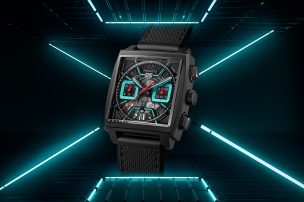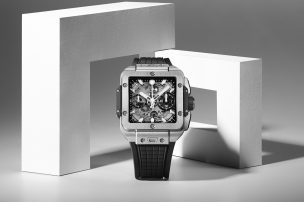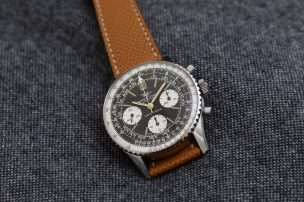
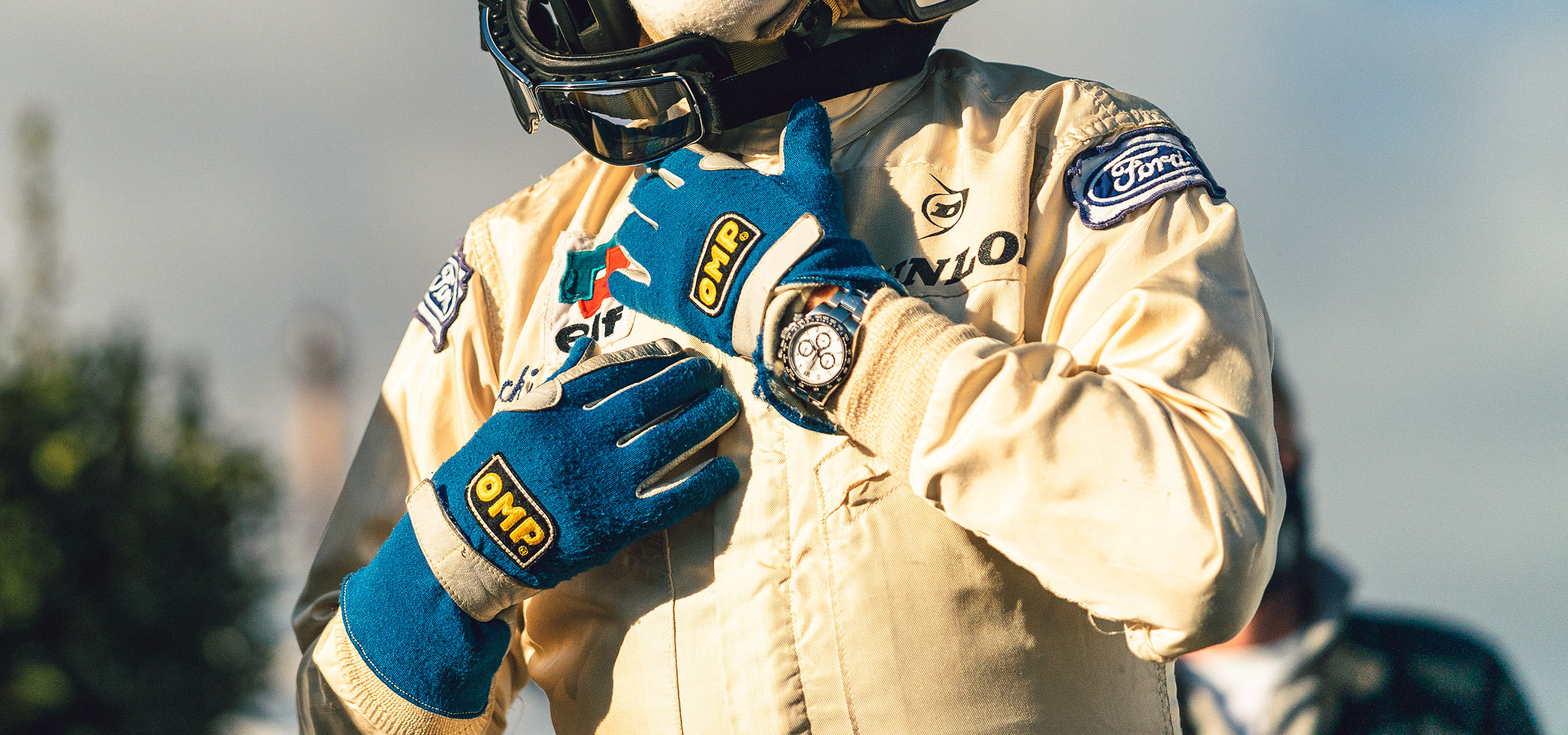
All You Need To Know About The Rolex Cosmograph Daytona
The Rolex Daytona is one of the most revered models in the world, but why? We are here to answer all of the questions you ever had when it comes to the most famous chronograph of all time.
Where it all began: Daytona International Speedway
It’s possible that some of us know the Daytona watch better than the Daytona International Speedway. For this reason, it is worth taking a look at the place behind the name. Daytona Beach, USA, is home to the racing event behind the watch, and is known as the birthplace of speed. Motor racing has been taking place there ever since 1903, when it literally involved speeding across the sandy shores of Florida. Numerous land speed records have been broken there across the years, including the fastest world speed – 14 times over, no less. After years of temporary wooden grand stands and wooden tracks, the Daytona International Speedway was finally officially founded by William Henry Getty “Big Bill” France Senior in 1959.
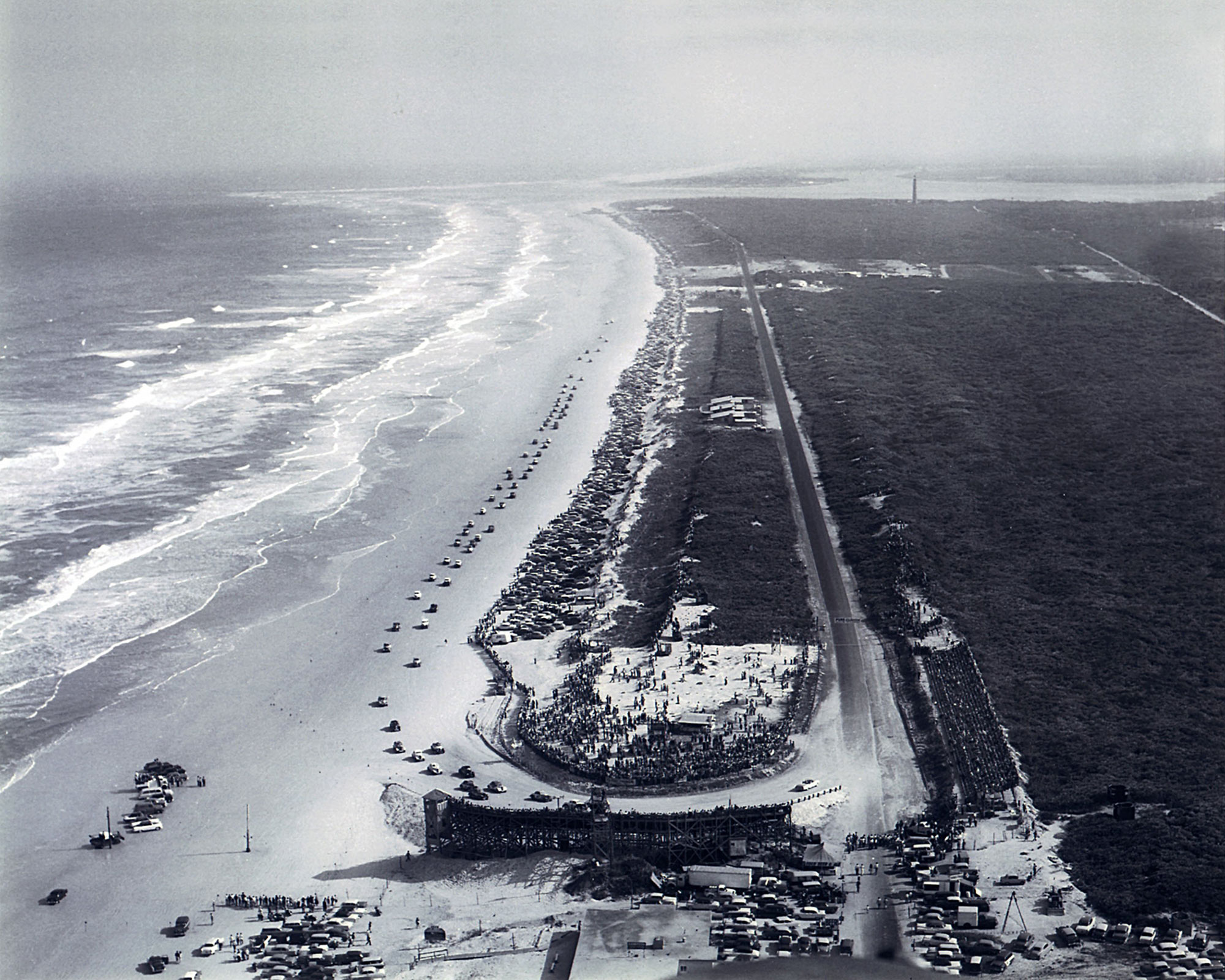
© Rolex/©ISC Archives via Getty Images
What is the connection between Rolex and Daytona?
Rolex’s driving history dates all the way back to 1935, when Sir Malcolm Campbell famously set the world speed on land (276 mph) at Daytona Beach – while wearing a Rolex Oyster watch. In advertisements that followed the win, Campbell praised the watch’s exceptional resistance to shocks and vibrations. In this sense, he became the first motorsports ‘ambassador’, if you will, for Rolex. This was only the beginning of Rolex’s involvement in racing.
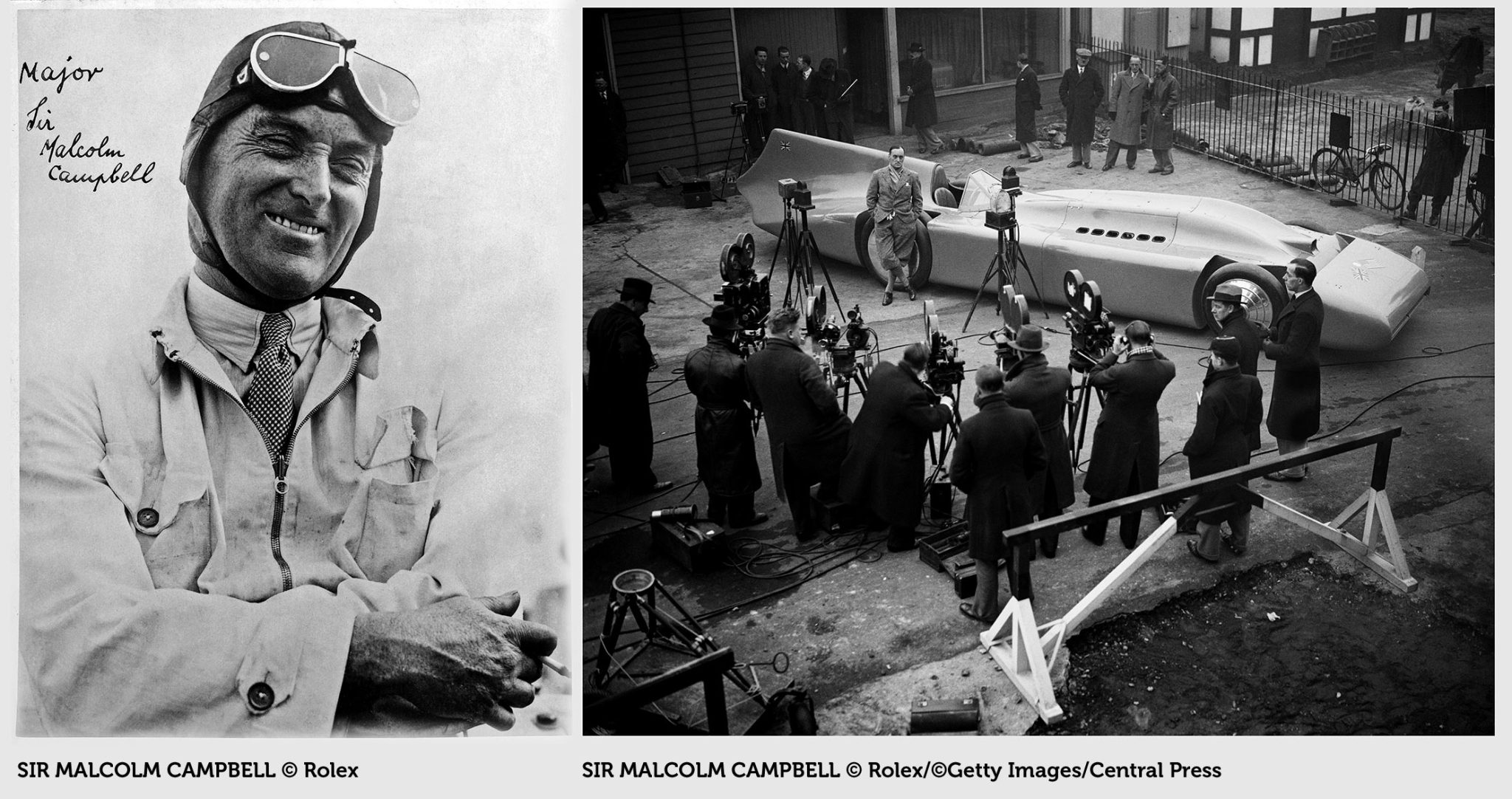
In the late 1950s, a new way of winning emerged, as victorious drivers began to be presented with not only trophies, but also wristwatches. Rolex played a part in this new tradition, offering one of its Oyster models at a number of driving events.
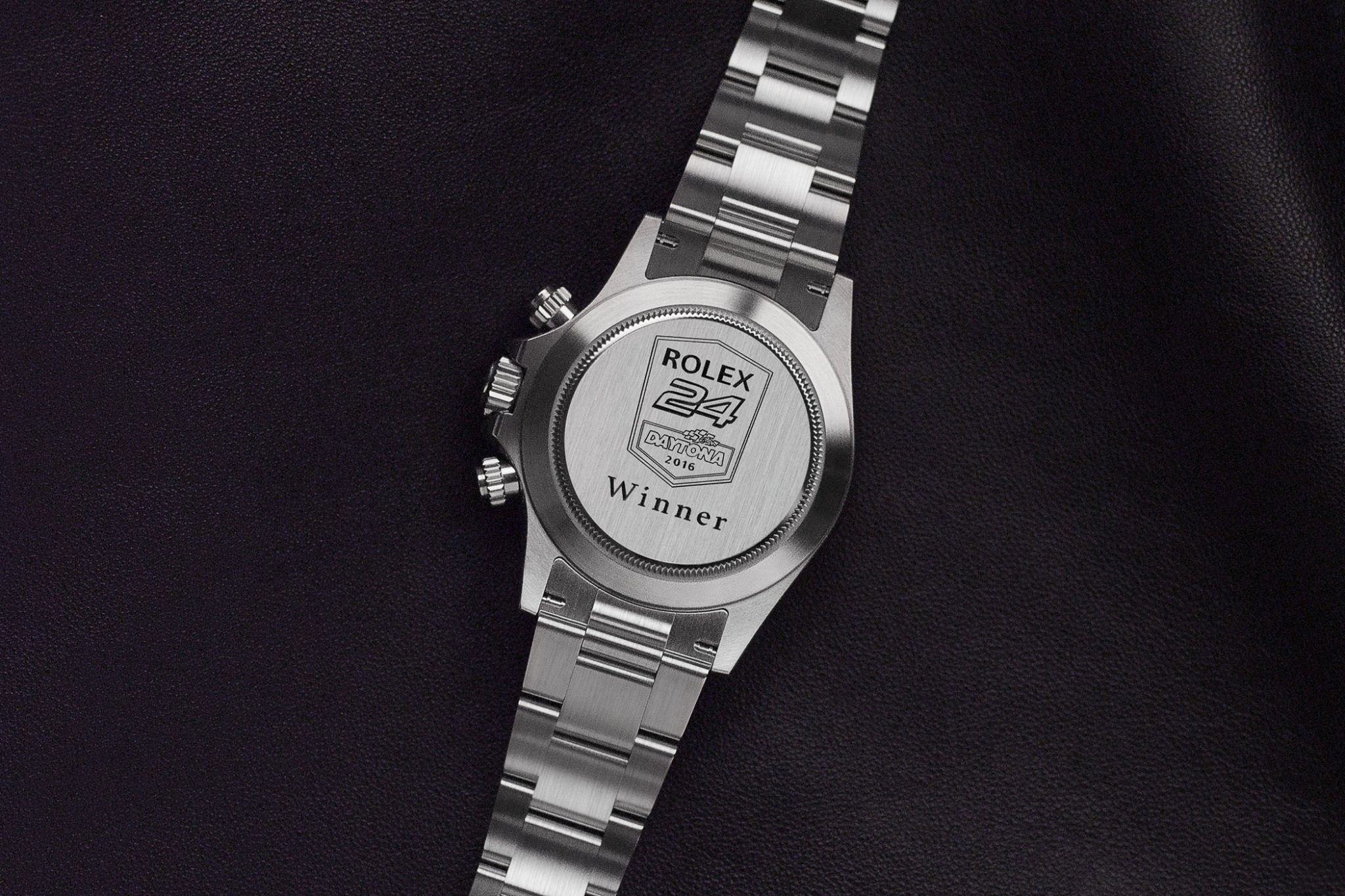
© Rolex/Steve Cooper
However, it was not until the 60s that things really took off for Rolex and the Daytona. The definitive moment for Rolex and the Daytona International Speedway’s relationship began shortly after the Cosmograph‘s release. The aforementioned founder of the official racetrack, William France Senior, was incidentally also the owner of a Rolex. He appeared in one of the company’s adverts, dubbing Rolex watches (although not specifically the Cosmograph) as the ‘Official Timepiece of the Daytona International Speedway’.
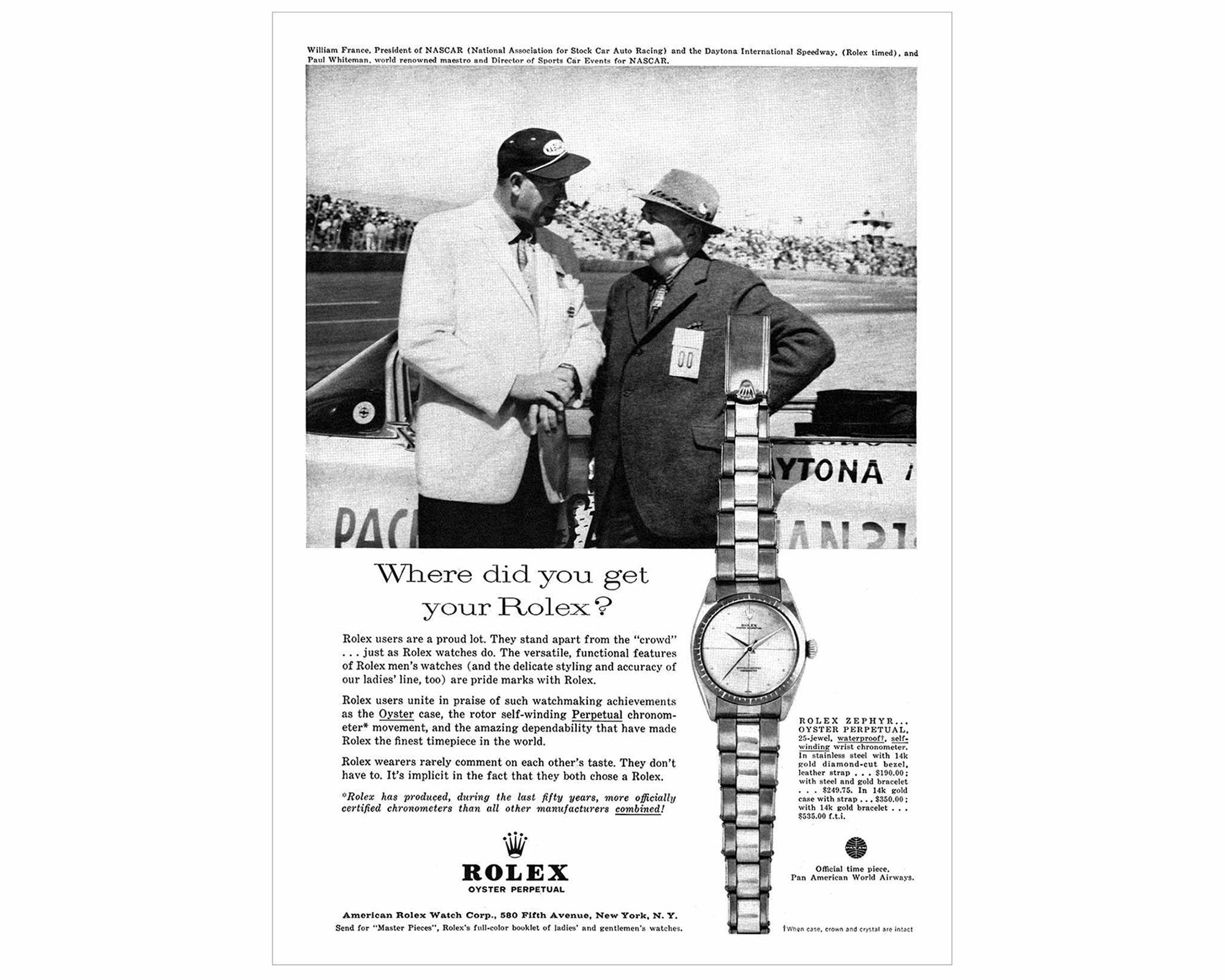
© Hobbydb.com
When was the Rolex Daytona introduced?
In case you are already wondering – despite its roots, the Daytona was originally known simply as the Cosmograph. Created in 1963, it first appeared in the form of the Ref. 6239 – a stainless-steel model, featuring a matching bezel with an engraved tachymeter scale. Two years later, it evolved into also offering a bezel with an acrylic insert and screw-down pushers.
From the very beginning, the aim of the Cosmograph‘s design was to meet the demands of professional racing drivers. As a result, the watch did not immediately catch on commercially. One reason for this was that, at an initial size of 36.5 mm, it was actually considered to be pretty large. However, Rolex soon came up with a marketing strategy, as one advert from 1965 demonstrates, reading:
Motor racing calls for split-second timing – but accurate timing is important in many other aspects of our daily life too. And that is why many of the world’s great men wear Rolex watches like the superb Rolex Cosmograph illustrated here.
Two watches in one – a highly accurate masculine wrist watch and a precision stop watch capable of measuring elapsed time to one-fifth of a second – the Rolex “Cosmograph” is the watch for the sports enthusiast and the businessman.
This advert is very telling. In fact, it’s strangely reminiscent of the Submariner Date‘s marketing, with the idea of a ‘Professional’ watch being suitable for the everyday man. This marketing ploy was successful; following a very slow start, the Rolex began to take off amongst drivers and enthusiasts alike.
Rolex Cosmograph Daytona: Defining features
While marketed as “A Watch Born to Race”, the Daytona does make sense as an everyday watch, as Daytona owner George Glasgow Jr demonstrated to us in a recent interview. As he pointed out, it’s a highly resilient watch – and the reason for this is because it’s a sports watch. In order to understand its success in everyday life, as well as on the racetrack, it is worth going through the watch’s various components in detail.
A sporty case
As a sports watch, the Daytona should technically always be Oystersteel (stainless steel), as was the case originally. However, having morphed into an everyday watch and coveted collector’s piece, other versions are now available. This includes Oystersteel and 18-carat gold, pink gold, yellow gold, white gold, or platinum. The use of 18-carat gold ensures durability, not to mention it makes it easier to polish over any scratches. Therefore, whether using Oystersteel, gold, or a combination of both materials, the Daytona is perfectly able to handle the knocks of everyday life. Finally, while originally measuring 37 mm, the modern Daytona has a 40 mm diameter.
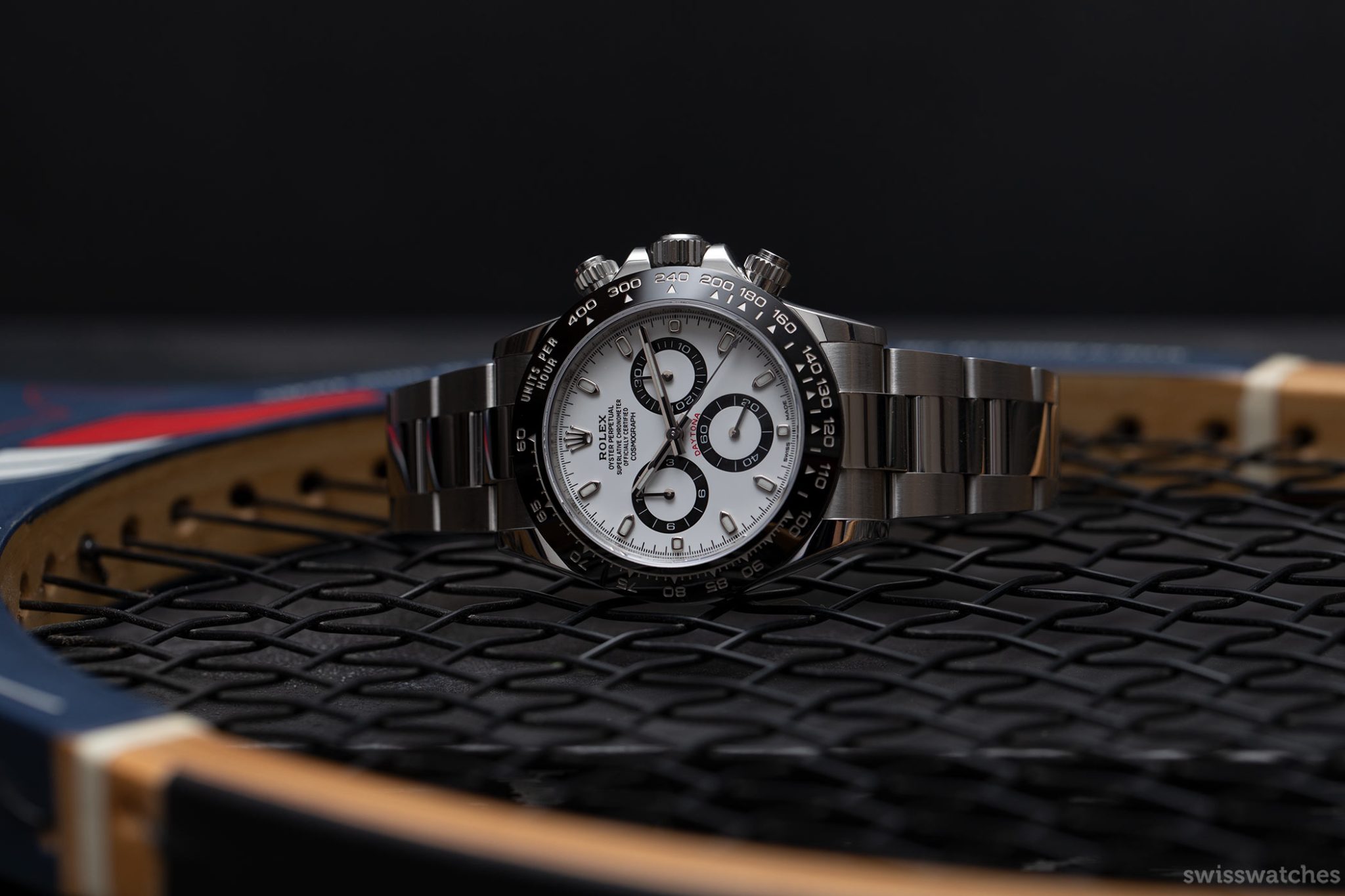
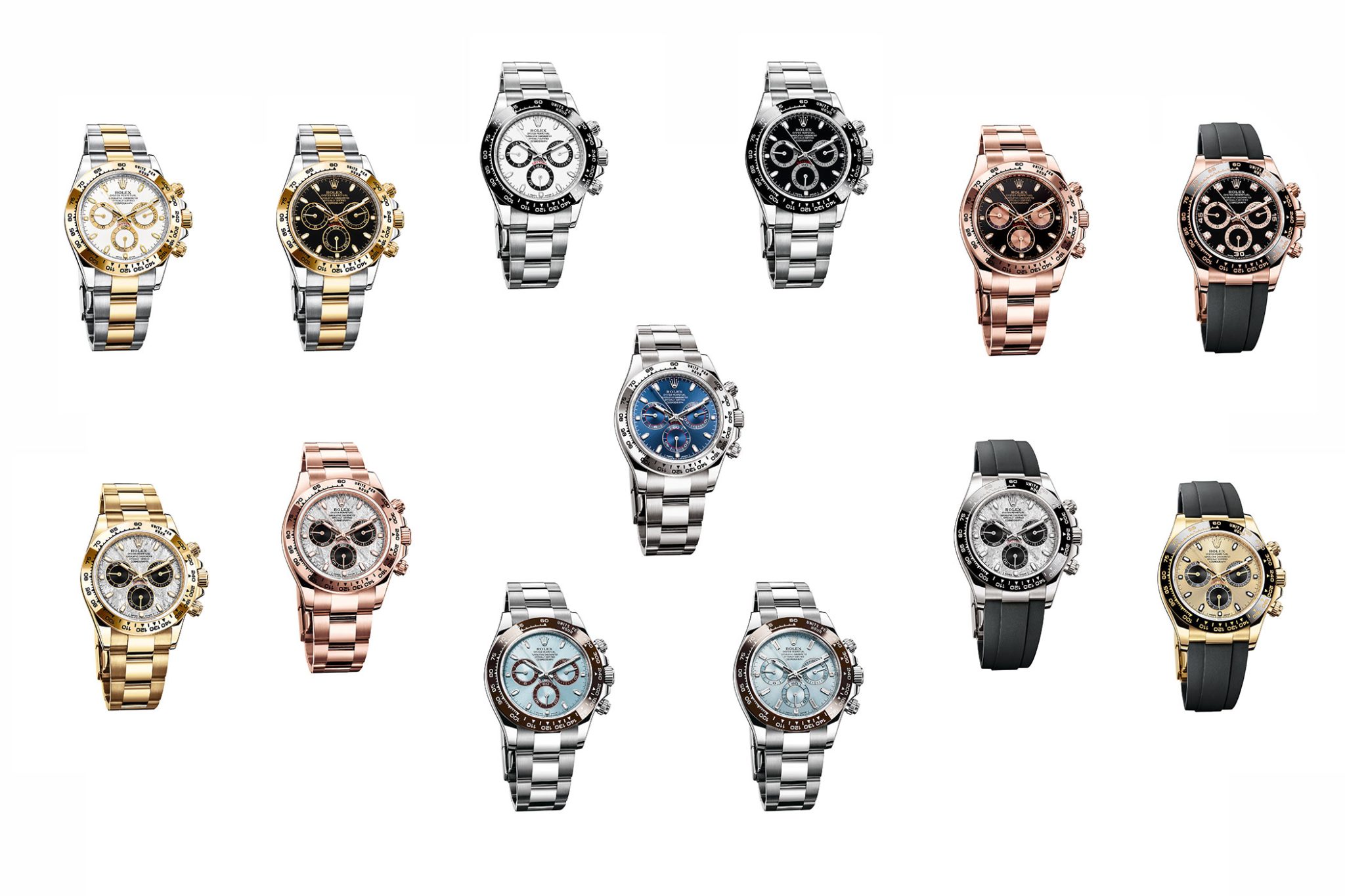
A fast-paced bracelet
While not integrated into the case, the Daytona bracelet is still sporty. The classic choice is Rolex’s Oyster flat three-piece bracelet. However, ever since 2017, the brand is also offering its Oysterflex bracelet. These patented bracelets secure with the Oysterlock safety clasp and attach to the case with a flexible, strong titanium and nickel alloy metal blade. Black elastomer covers the blade, not only protecting it, but also making the bracelet very comfortable.
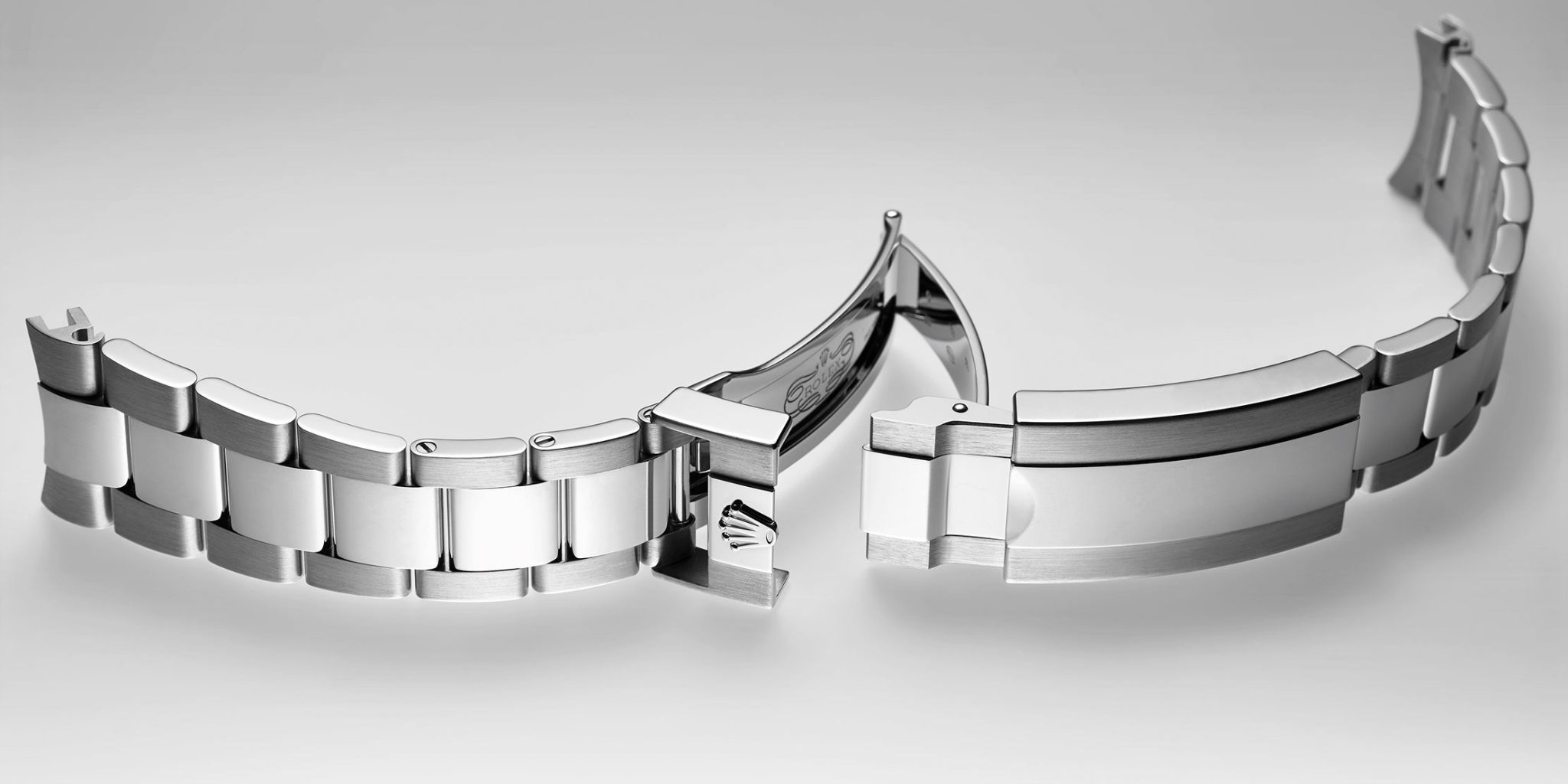
© Christophe Lauffenburger
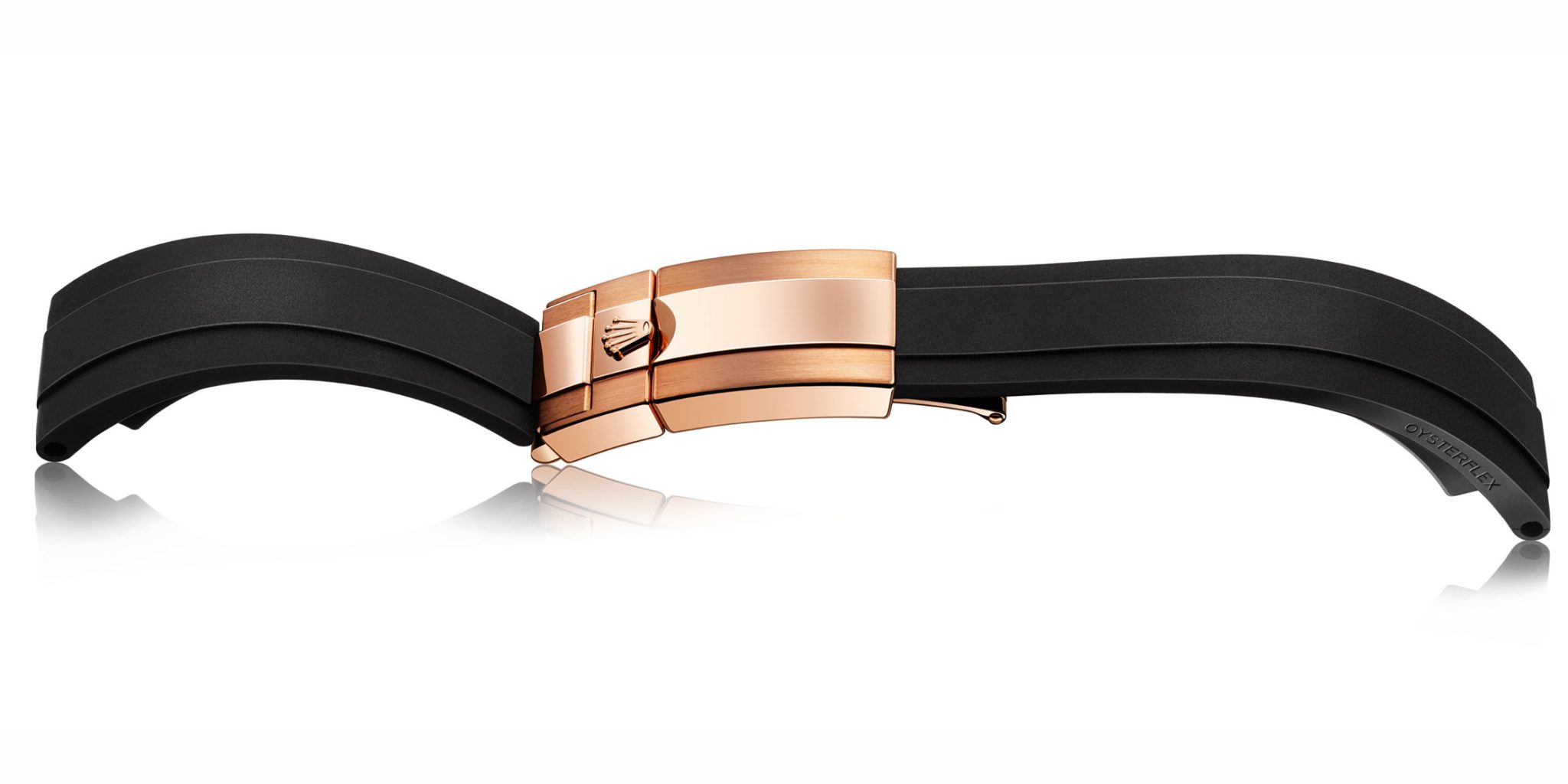
© Thomas Hensinger
A legible dial
As a watch primarily meant for racing, the layout of the Daytona dial remains highly legible. The dial’s design aims to help drivers map out their track times and tactics. Therefore, the watch’s two counters at 3 and 9 o’clock display the 30-minute counter and 12-hour counter respectively. Small seconds appear at 6 o’clock. Meanwhile, the chronograph central sweep seconds hand allows an accurate reading of 1/8 of a second.
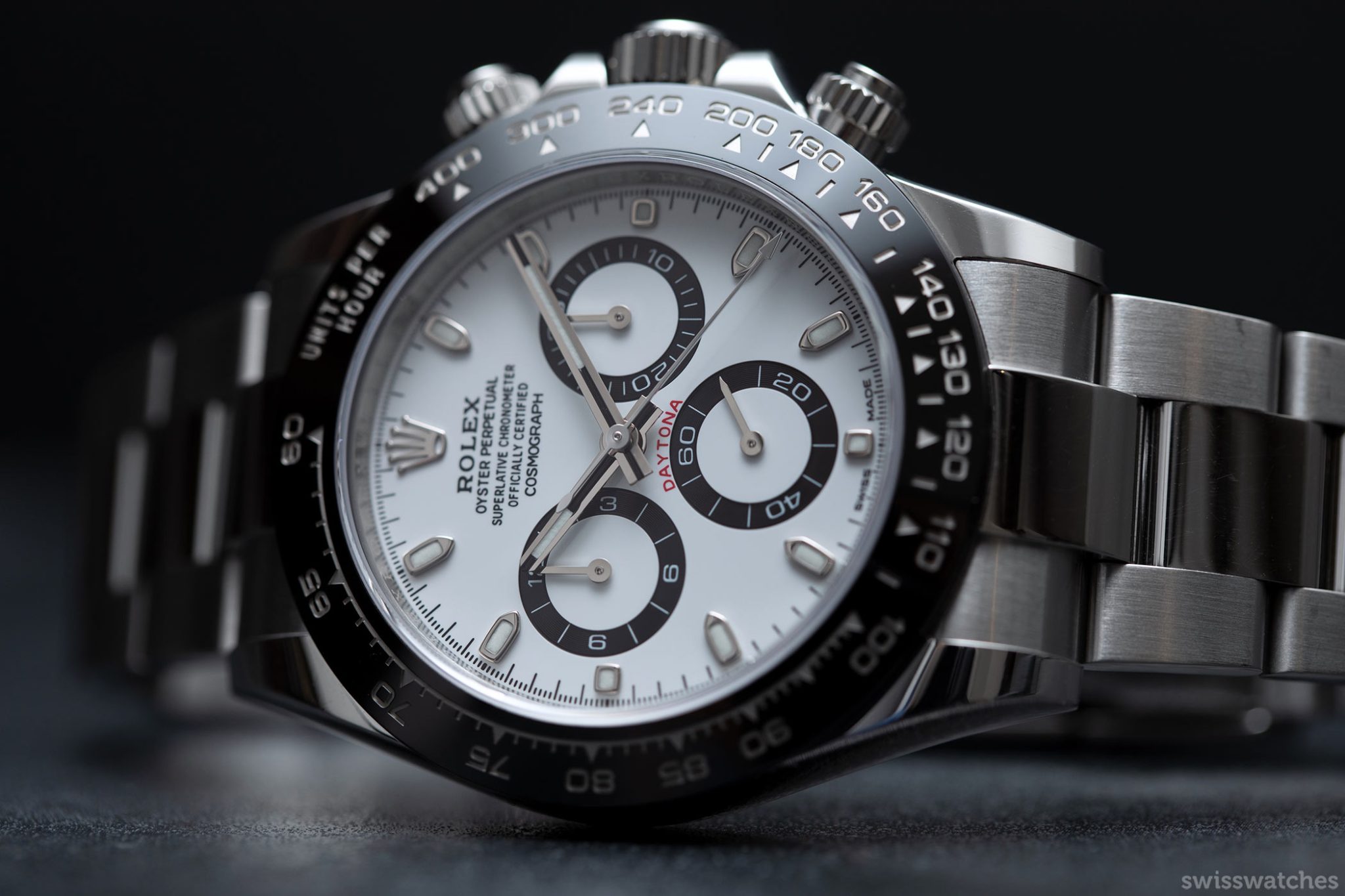
Historically, Daytona dials from around the 70s featured the lower case Greek letters “SIGMA”. This is visible on some models on either side of the word “Swiss”. Watchmakers, as well as collectors, recognise this as an indication of the dial (or its markers) using a precious metal. This is particularly relevant given that the “SIGMA” was introduced during the quartz crisis, and was also therefore essentially a reminder of the mechanical watch’s investment value. It was also used on other Rolex models with precious metal dials, such as on certain Datejust watches.
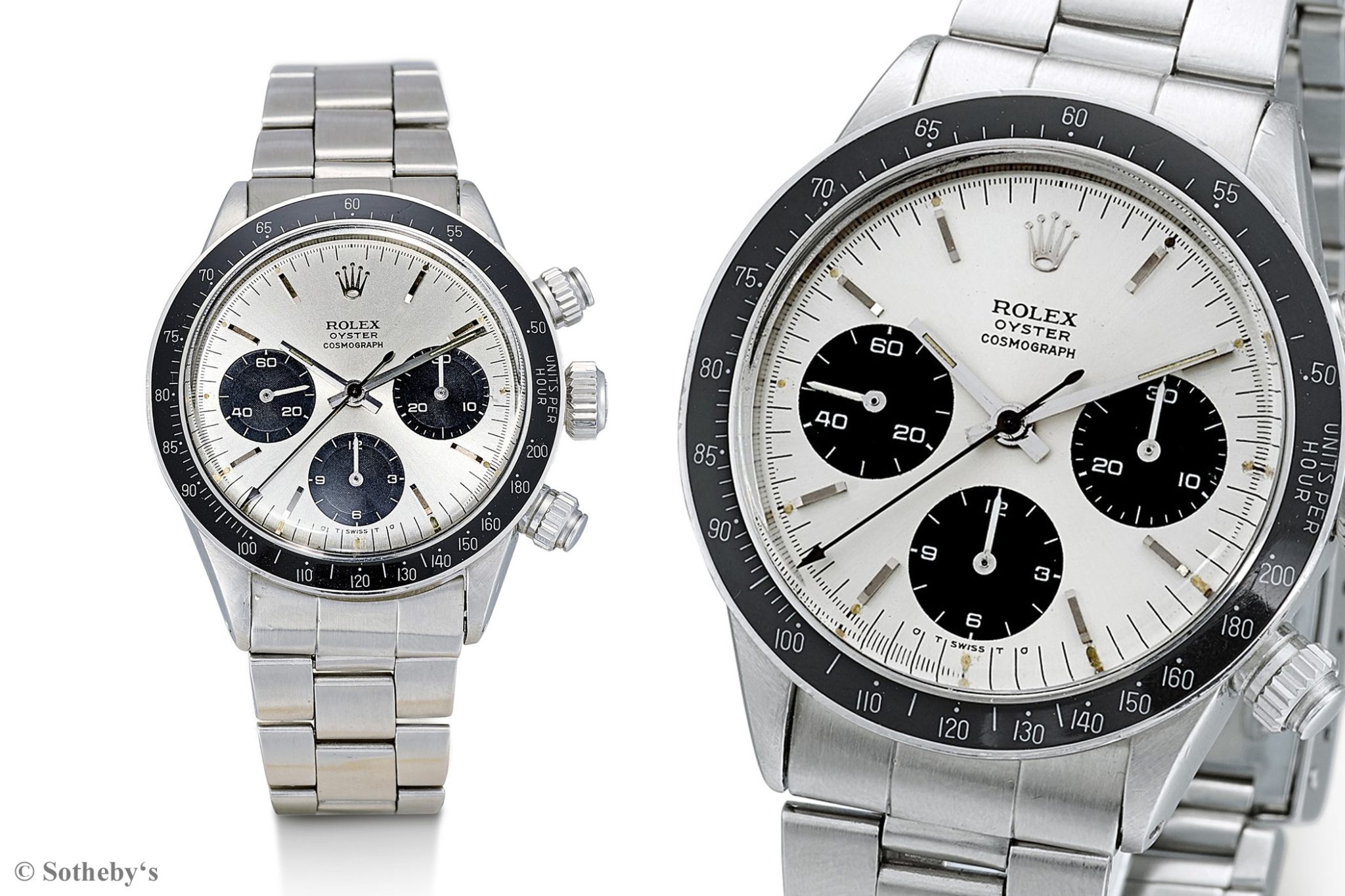
Photo credit: Sotheby’s
A hardy, modern bezel
While previous models used acrylic and steel, the modern Daytona’s monobloc Cerachrom bezel is highly resistant to scratches and corrosion. Its colour even remains unaffected by UV rays over time (a plus in Florida, at least). The bezel also of course features an engraved tachymeter scale, allowing the wearer to read an average speed over a given distance based on an elapsed time. The tachymeter scale is highly legible, thanks to a thin, shining layer of platinum on the numerals.
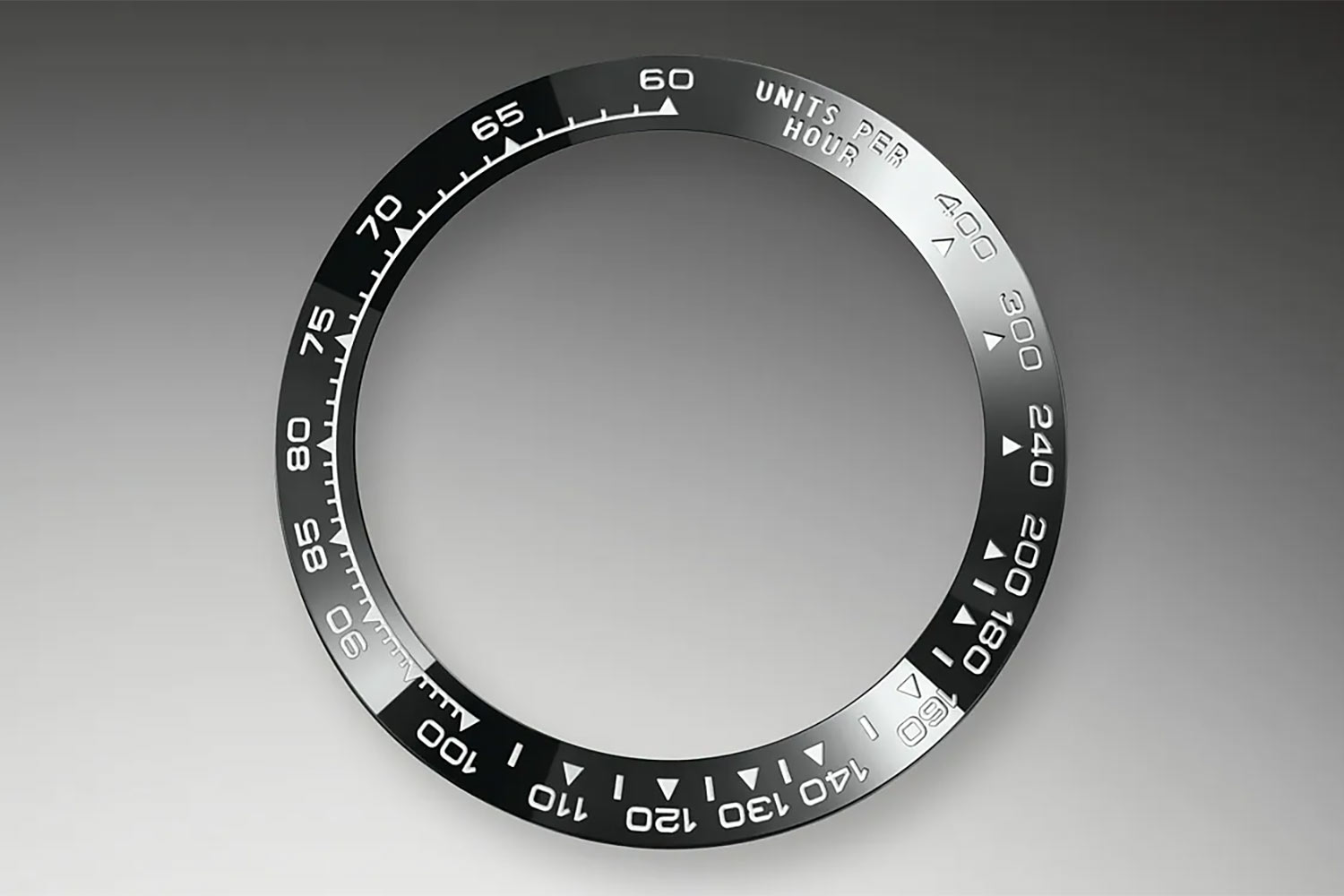
The Daytona’s bezel also holds the sapphire crystal in place, attaching to the middle part of the case. Additionally, a screw-down crown, caseback and Rolex’s Triplock triple waterproofness system help the model to achieve its 100 m (330 ft) water-resistance.
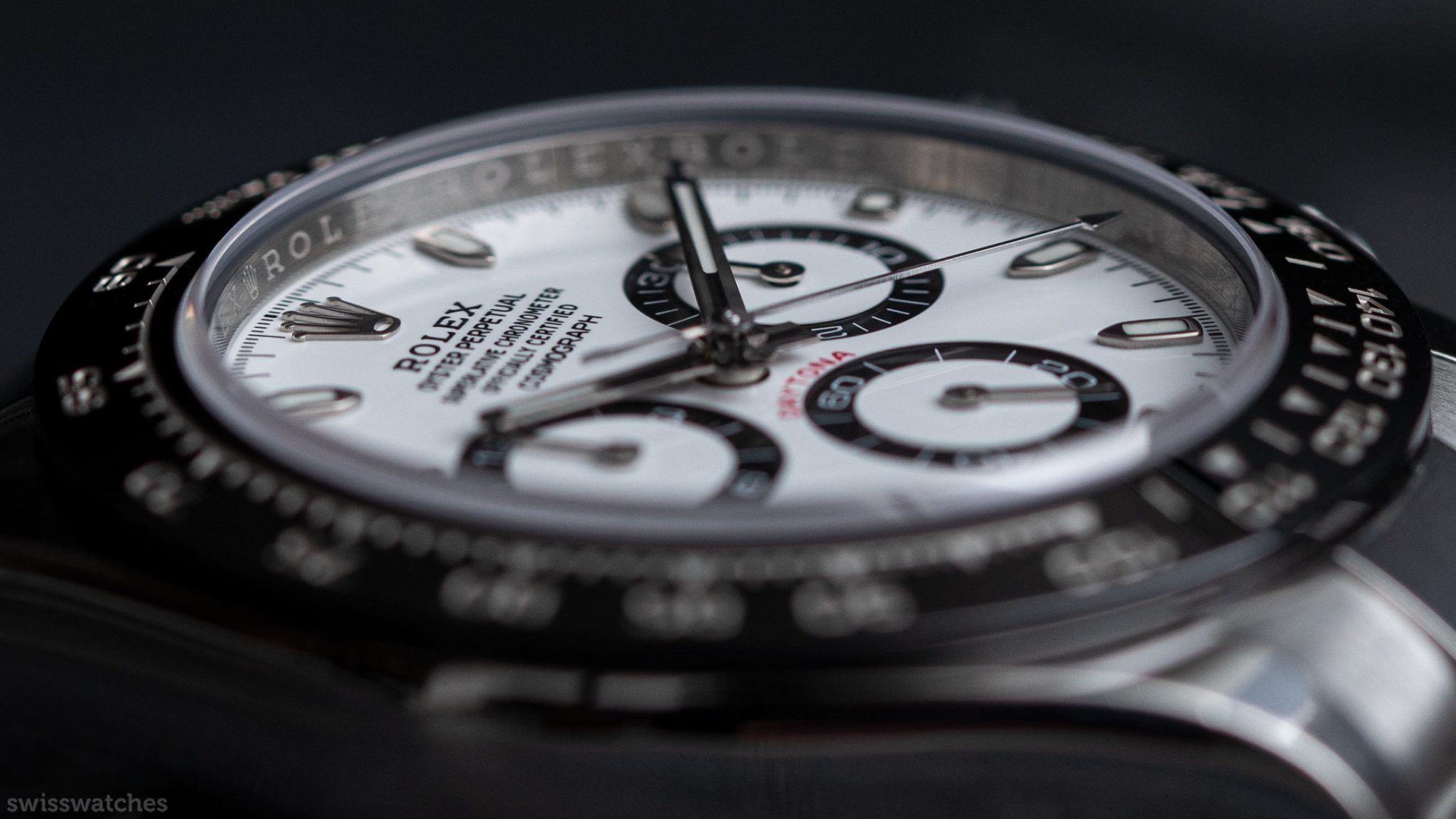
The Calibre
Historically speaking, the Daytona started out as a mechanical watch, using a Valjoux-72B-based chronograph movement. However, upon the inception of Zenith’s El Primero movement, Rolex adopted its competitor’s calibre for its second-generation Daytona models.
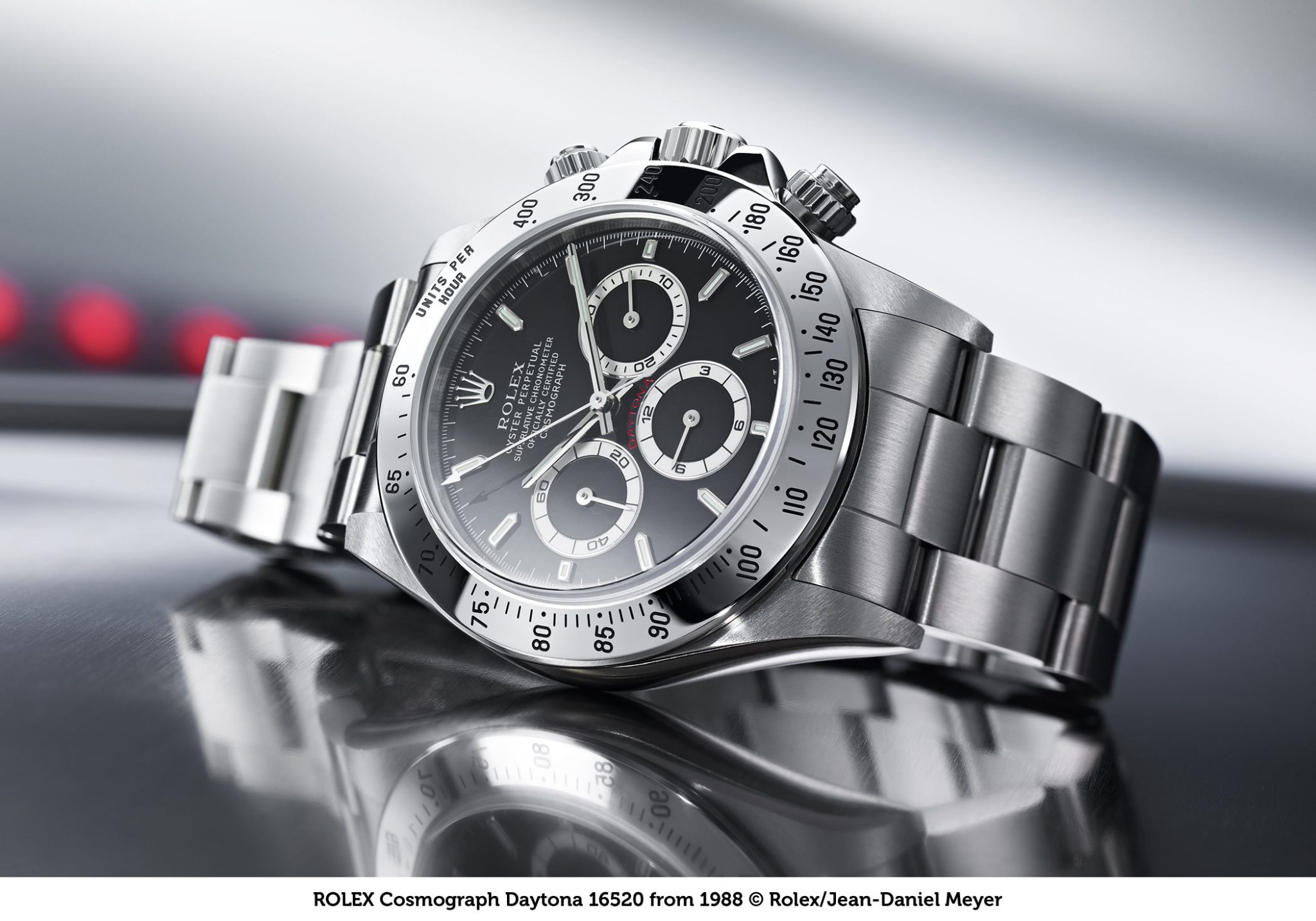
This gradually underwent numerous modifications and tweaks – some say that no less than 200 amendments were made. This included lowering the frequency from 36,000 vph to 28,800 vph, and the removal of a date function. This heavily amended movement was the calibre 4030.
Rolex finally switched to an in-house movement in the year 2000, in the form of the calibre 4130. The Rolex Daytona still uses this same calibre today. Specially designed by Rolex for the Daytona watch, it has a power reserve of 72 hours and – like its predecessor – a frequency of 4 Hz. Notably, the calibre 4130 uses a vertical – as opposed to lateral – clutch, which activates the chronograph. Functioning using two discs, one above the other, this architecture helps the chronograph function to offer precise – not to mention smooth – starting and stopping of the running seconds. Furthermore, it allows the chronograph to function for long periods of time, without a negative impact on the watch’s precision.
Why are the design features of the Daytona important?
After examining the blueprint of the watch, one doesn’t just note its durability and precision, but also its ability to endure through the generations. One important reason for this is its chronograph function. As pointed out in the famous book Ultimate Rolex Daytona, the chronograph is what makes it “complicated enough to satisfy the technical thirst of ‘men’.” This, combined with the fact that Rolex have stuck with a single basic design code over the years, plays a strong role in the model’s success. The idea of consistency is important at Rolex.
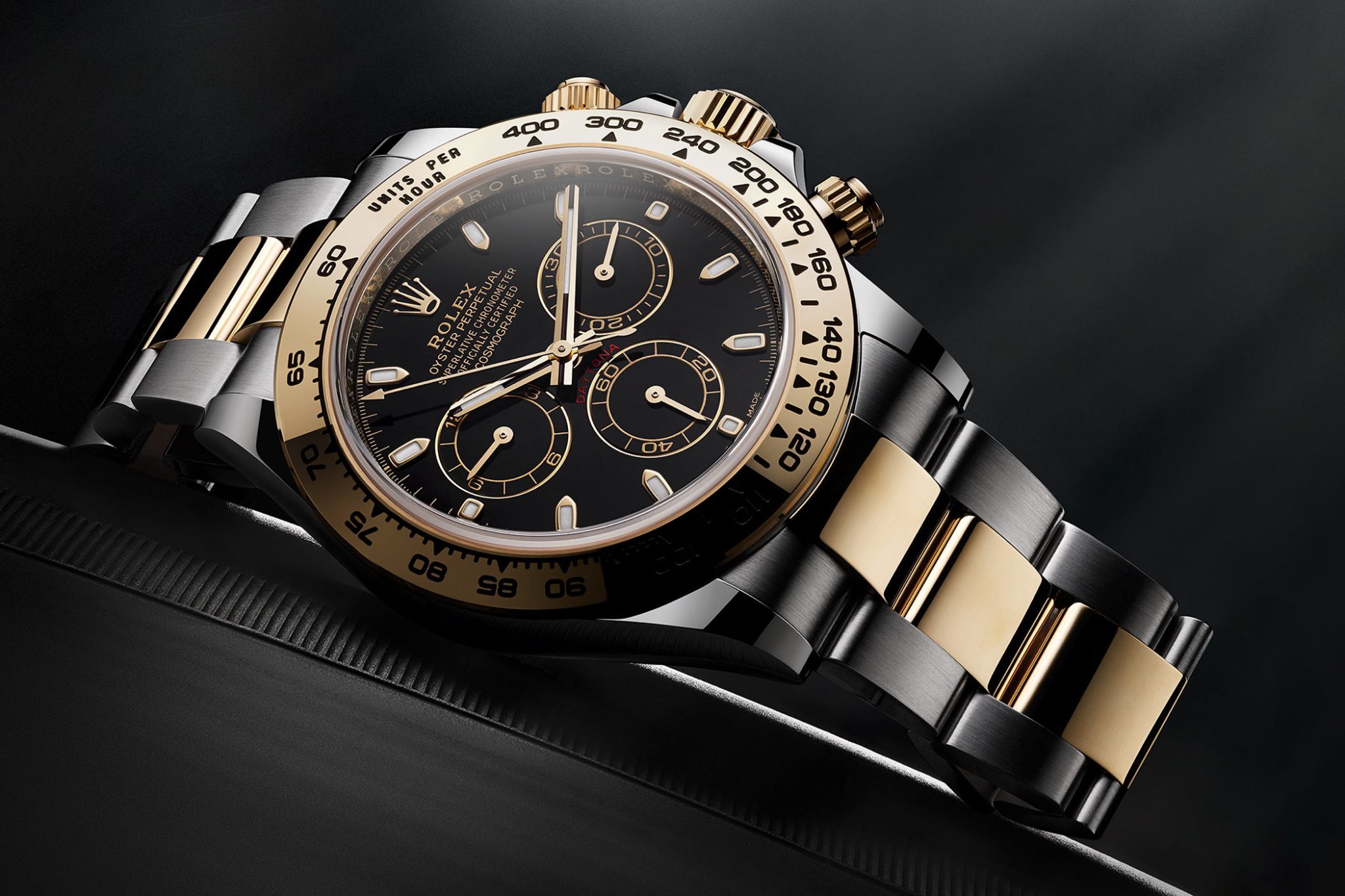
The brand prefers to slowly evolve, rather than rapidly and constantly change. This attitude works perfectly with the historical side of the watch. The result is a timepiece that appeals to people in a nostalgic and timeless way. In this sense, the Rolex watch’s high performance, and subtle yet stable evolution helps the Daytona to maintain its reputation not as a commercial product, but rather as a special piece of history and heritage.
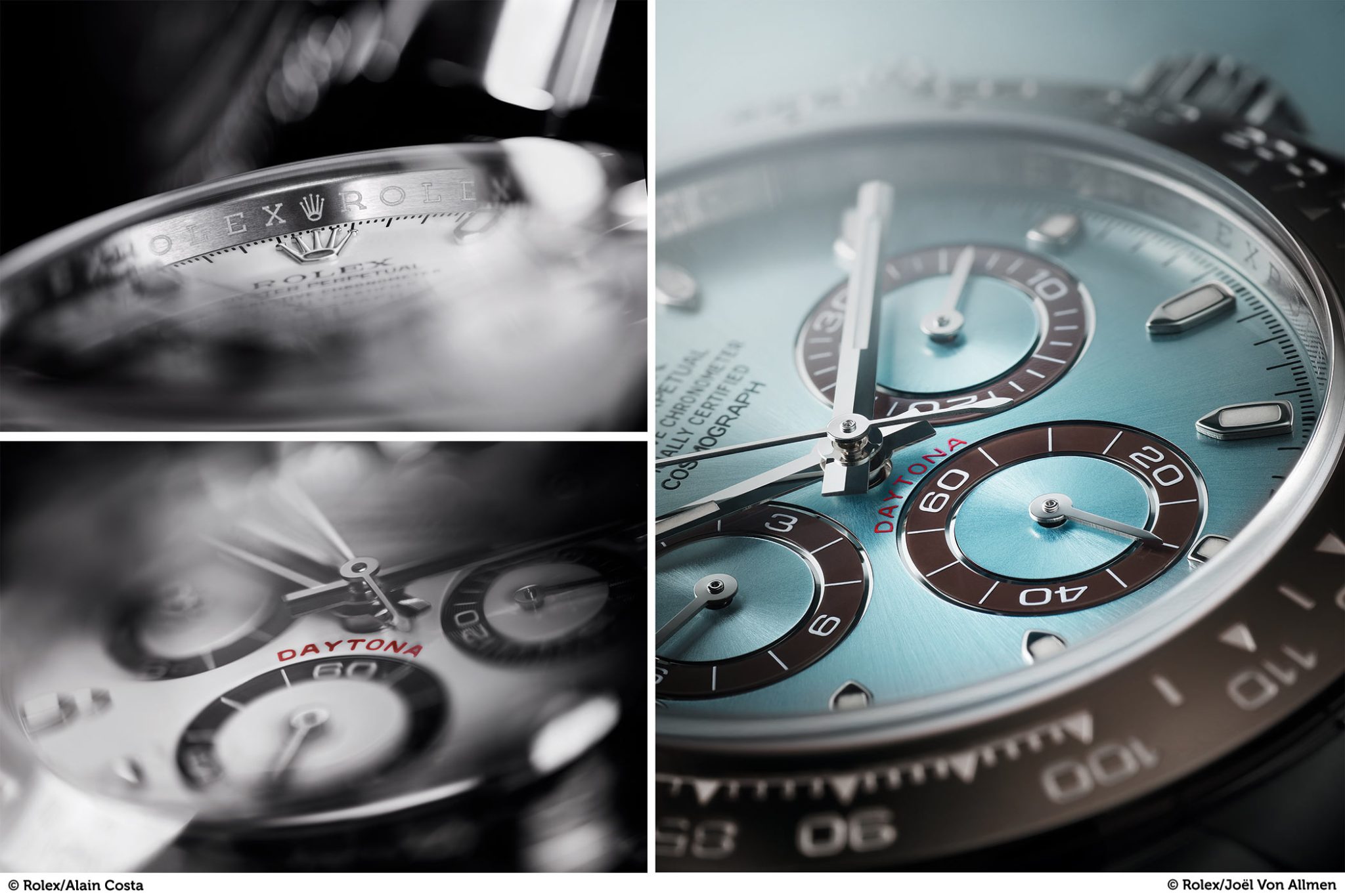
Paul Newman and the Daytona
Paul Newman, the American actor who competed in the 24 Hours of Daytona six times, is considered to be the man who embodies and represents the Rolex Daytona. The style icon’s first Daytona was a gift from his wife, Joanne, during the same film shooting that first got him into cars, Winning.
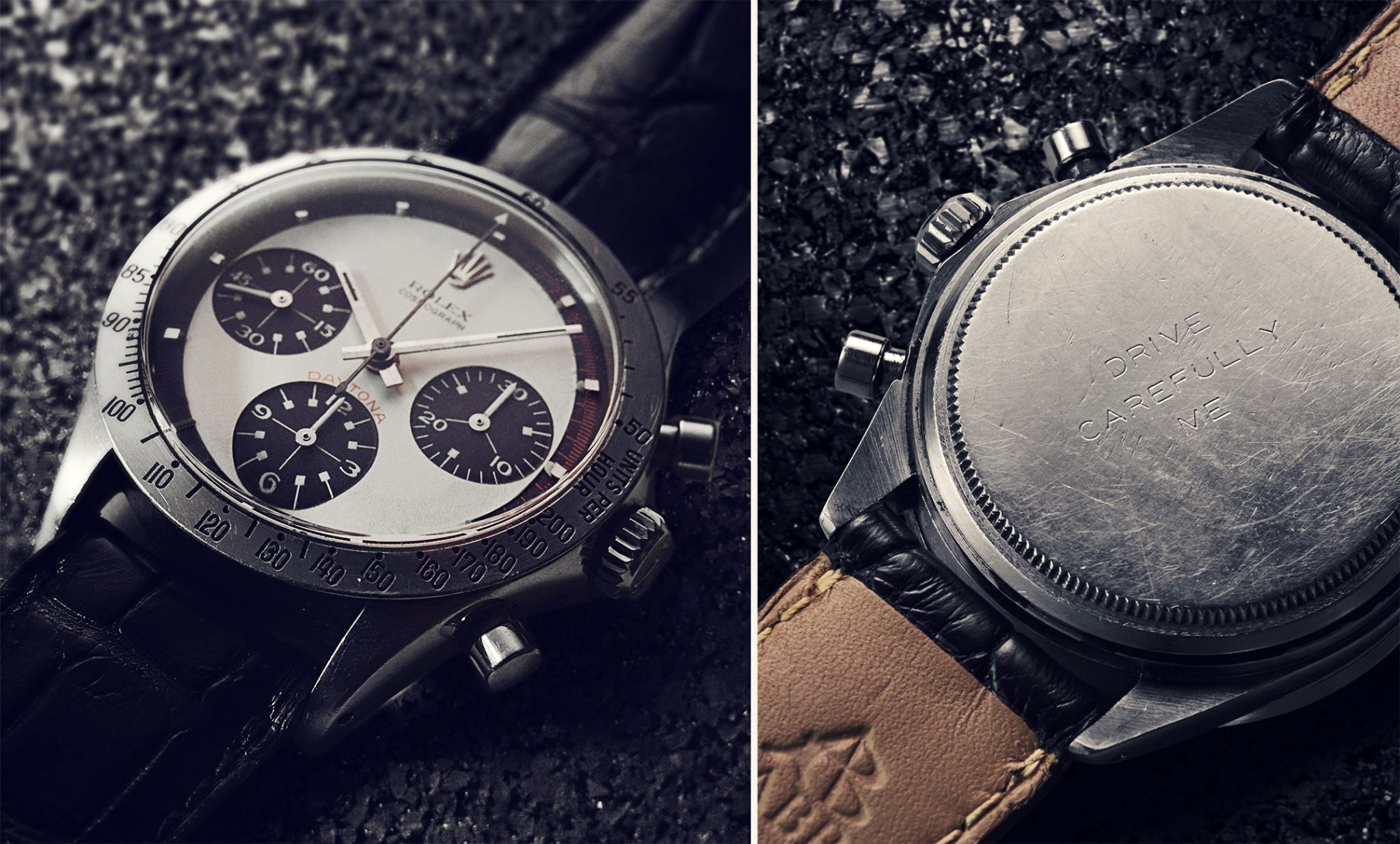
Credit: Studio Schöttger
From the filming onwards, Newman embarked upon a transition from actor to racing driver. He would go on to win four National Championships, not to mention come second in the 24 Hours of Le Mans, in 1979, driving a Porsche 935. Incidentally, the Cosmograph Daytona was almost named Le Mans. As a man of true perseverance, even in his final unwell years, Newman ran his last ever race at the Daytona racetrack aged 80, while promoting the Pixar movie Cars.
What is a Paul Newman Daytona?
Rolex “Paul Newman” Daytonas are among the most coveted and well-known models in the world. Given their nickname by collectors in the 80s, the specific references are the 6239 (the first model Newman owned) and 6263, plus the 6241 (with an acrylic bezel), 6264, 6265, and the particularly rare 6262. However, according to Sotheby’s auction house, it is the features on the dials that truly define these references as a “Paul Newman” Daytona. Features of the vintage chronographs include “Exotic dials” (more specifically, a three-coloured dial) and an Art Deco-style font. Additionally, the models are highly legible. Therefore, the racing driver’s pieces feature a printed seconds track around the dial. The graduations were sometimes inscribed in red. Finally, the counters were differentiated by squares on the markers for easier reading of tracked time.
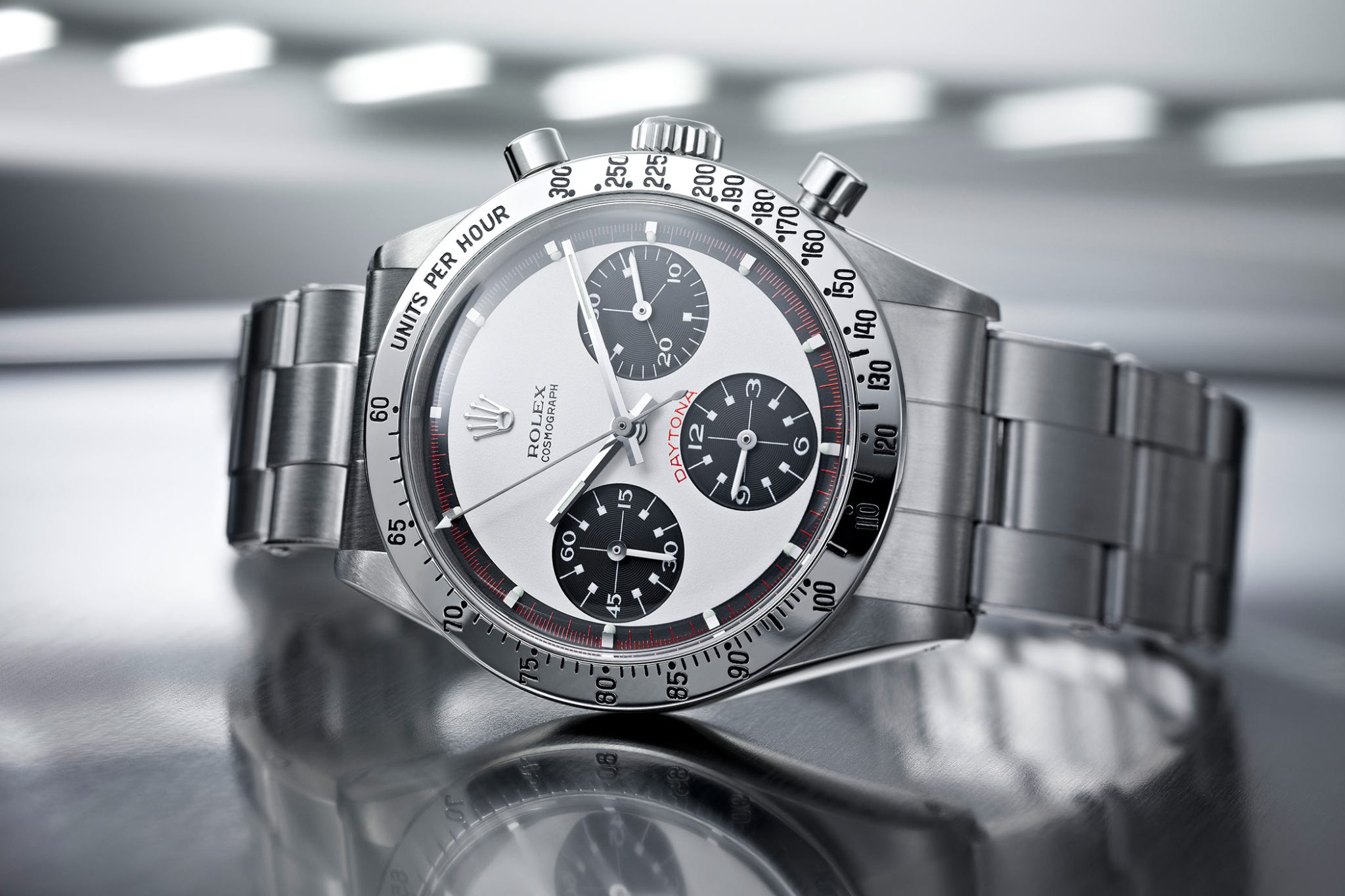
© Rolex/Jean-Daniel Meyer
Back in the 1960s and 1970s, there was naturally far less demand for these pieces. Not only was the Cosmograph Daytona one of the least popular models, but the “Exotic Dials” were even less well received, even leading to a lowering of prices. Therefore, it is rare for them to appear on the market today. This, combined with Newman’s role in creating the Daytona‘s legendary status, have led to the models becoming amongst the most expensive vintage watches in existence.
How much was the most expensive Daytona ever?
In 2017, a steel “Paul Newman” Daytona went at Philipps for 17.75 million dollars. Once owned by the man himself, Newman had passed the Rolex onto his daughter’s then-boyfriend, who had kept hold of it ever since 1984. The famous Ref. 6239 now belongs to an anonymous bidder, following its sale under the well-known auctioneer Aurel Bacs.
In October 2017, Paul Newman’s Rolex Daytona Ref. 6263 set the world record for a wristwatch at auction when it was sold for 17.752.500 USD at Philips.
Fotocredit: Phillips
How much does a Rolex Daytona cost?
On Rolex’s website, Daytonas start at only 12,240 euros (40 mm, Oystersteel). However, you aren’t likely to be able to obtain a Rolex directly from the supplier. Therefore, many turn to the pre-owned market, using websites such as Chrono24. These prices better reflect the price of a Daytona, starting at around 30,000 euros and heading upwards to around 80,000 euros. Ultimately, the price of a Daytona very much varies according to the model – but it’s certainly neither a particularly affordable nor available watch. The sporty steel models, in particular, can be extremely expensive.
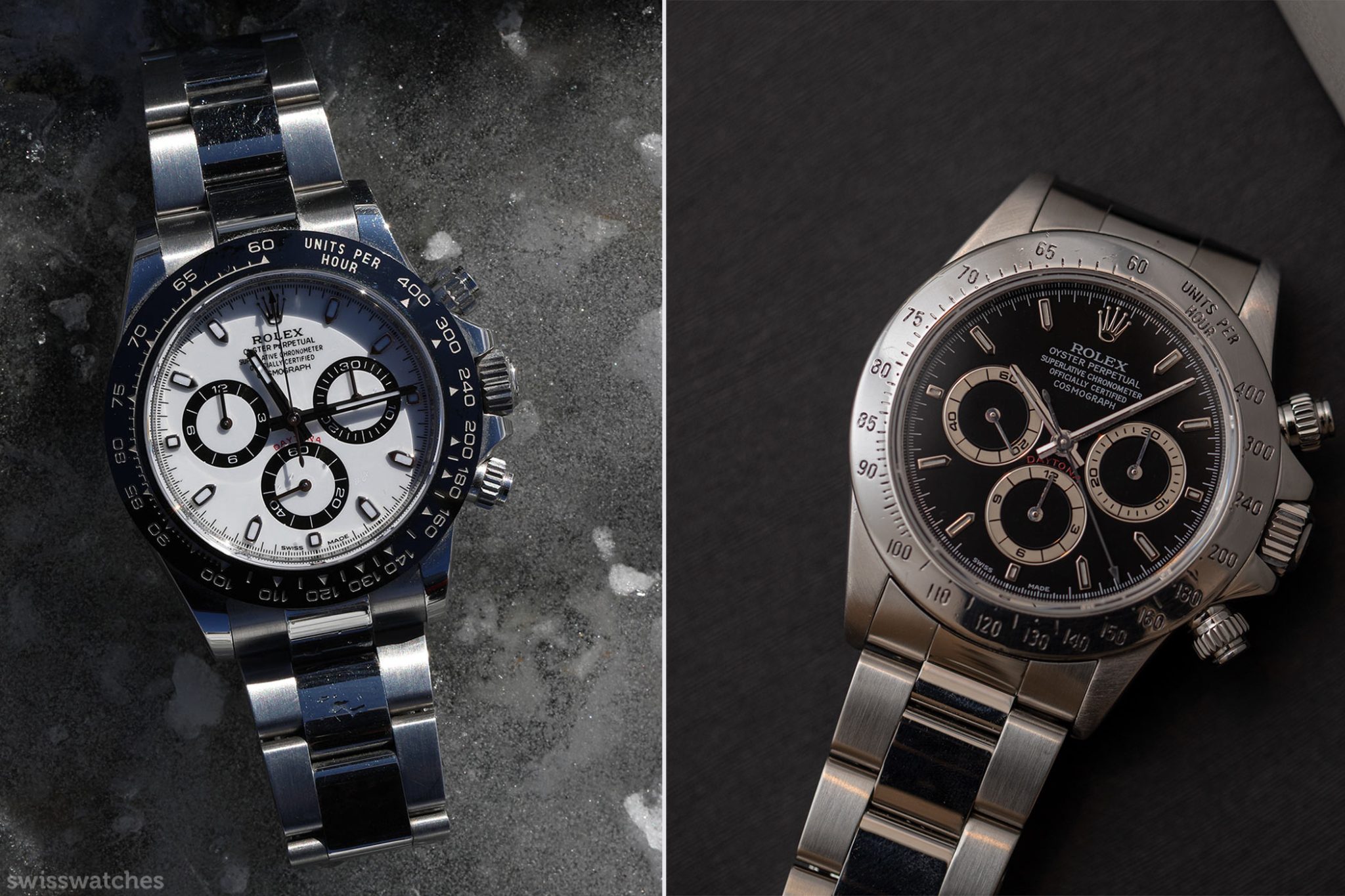
What is better: a vintage or modern Daytona?
As with competitors, it’s almost impossible to compare historic and modern pieces because they’re so different, not least due to the gradual evolution of the model in the last 60 years. In terms of what generation of Daytona to go for, you will need to take several things into account. This includes price point, calibre (vintage models likely won’t use a fully in-house movement), authenticity (parts may have been replaced over the years), and personal taste (the most important aspect of all).
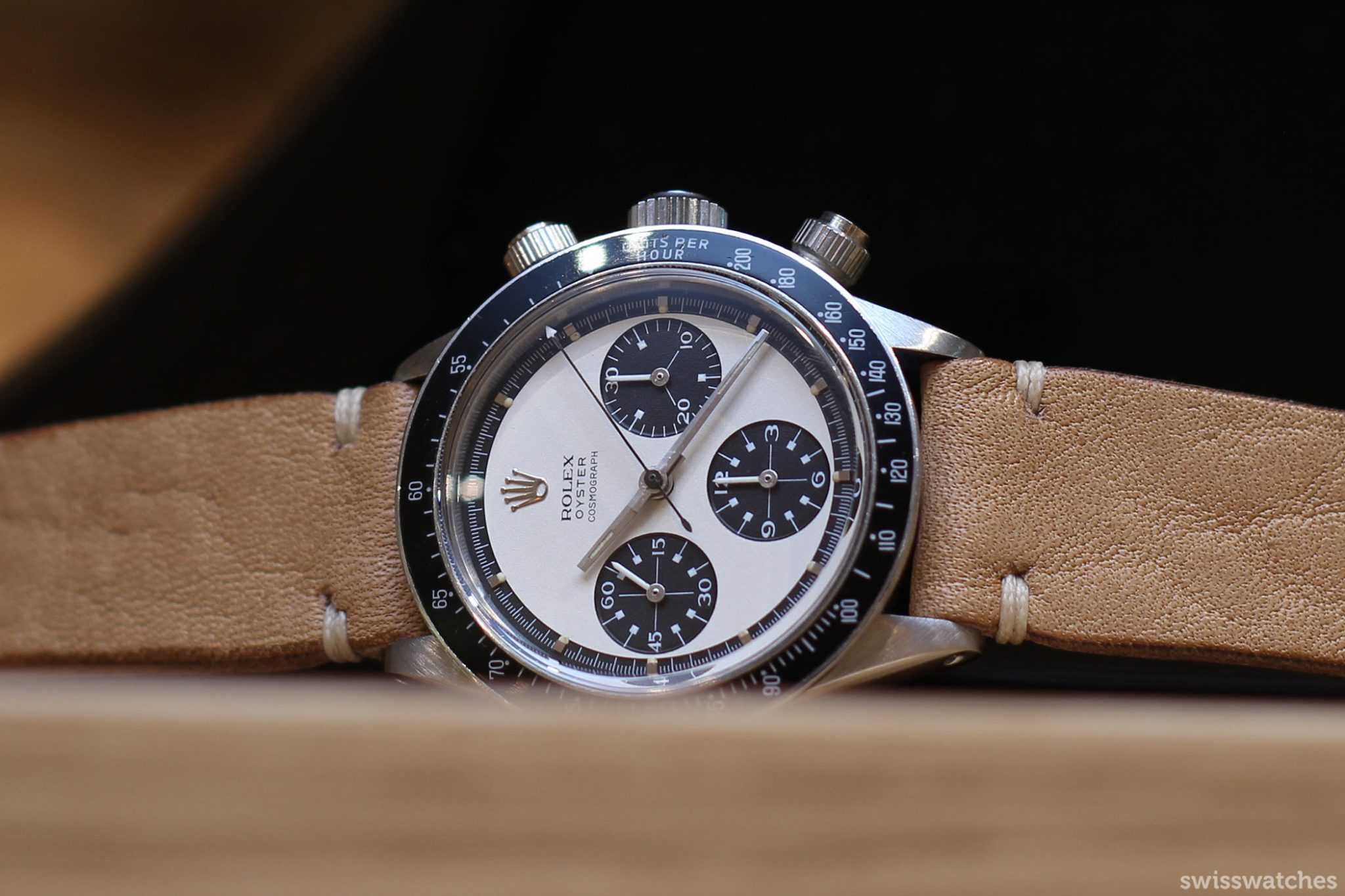
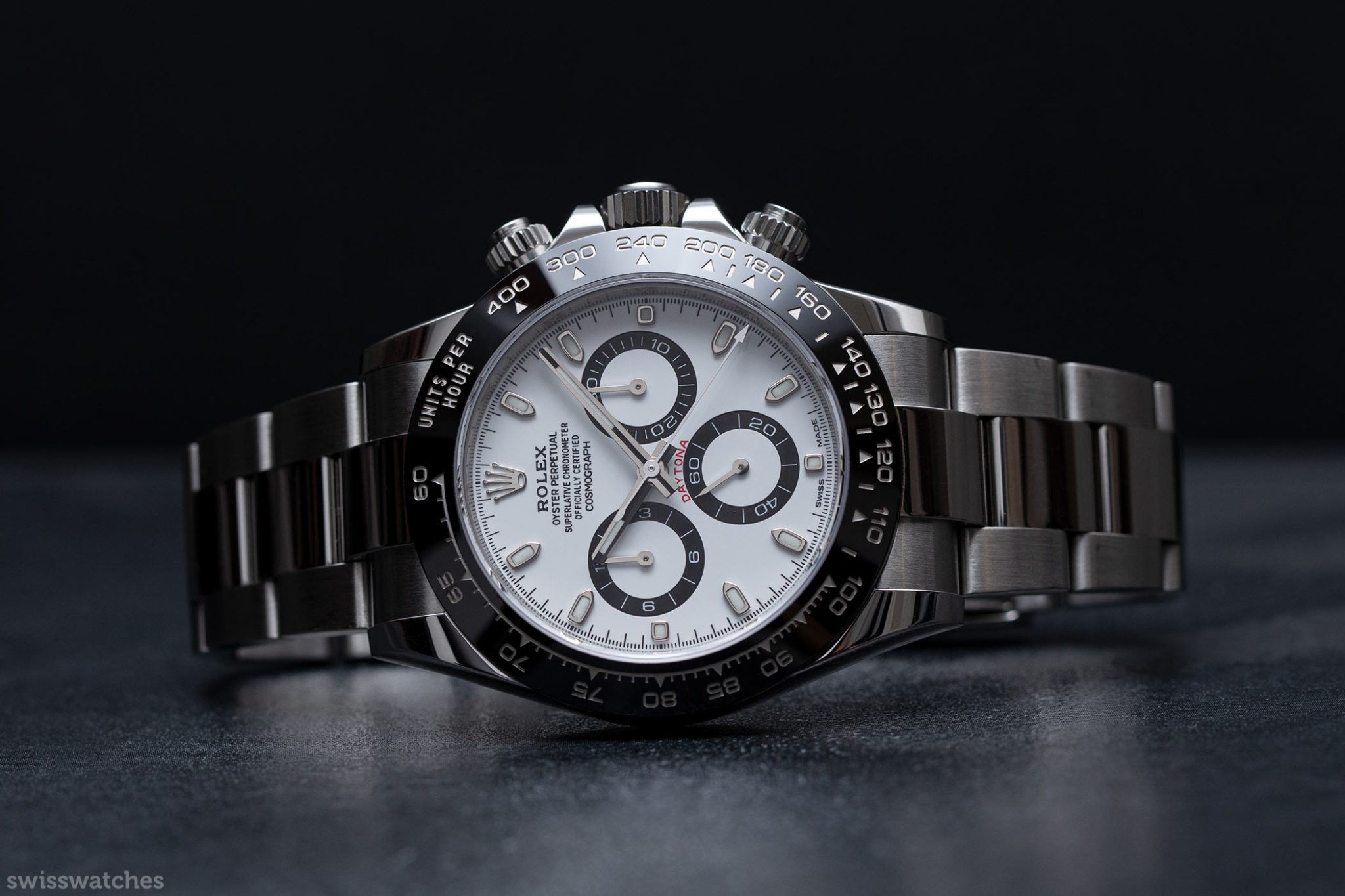
When should I wear the Daytona?
Part of the Daytona’s success is its flexibility. It has evolved from a racing chronograph, to an everyday watch, to versions such as the limited Tiffany models, which serve almost as dress watches or jewellery. As a result, there’s essentially no dress code when it comes to the Daytona. This is definitely another part of its widespread, long-lasting success and appeal.
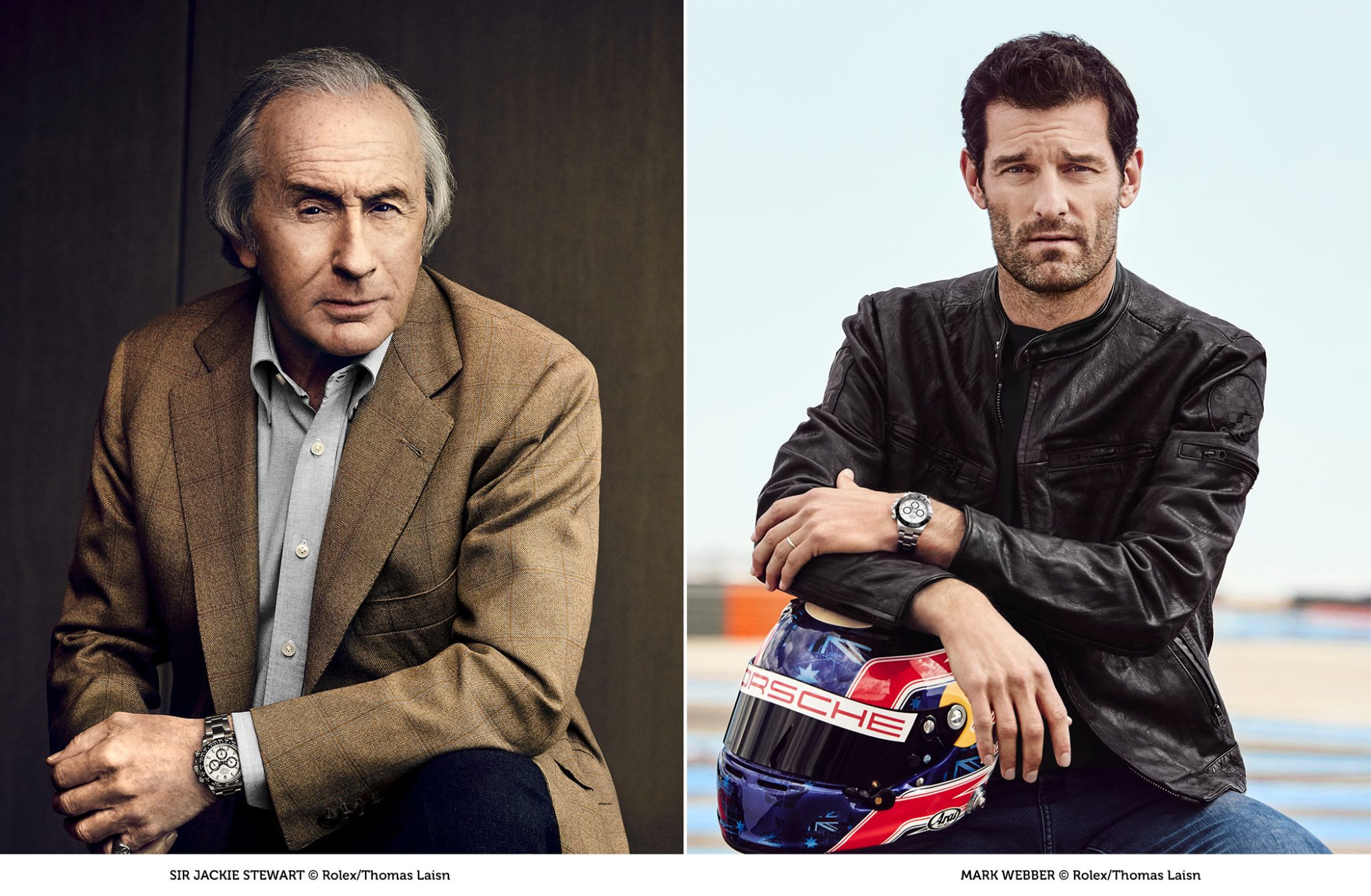
Who wears a Daytona?
The list of celebrities wearing a Daytona is long. First and foremost is the US singer and watch collector John Mayer, who has already caused one or the other Daytona hype moment. He owns a Rainbow Daytona (Ref. 116598) and “Paul Newman” Daytona 6264. The gold-green Daytona reference 116508 is known among insiders as the “John Mayer” Rolex Cosmograph Daytona. When the watch was launched in Basel in 2016, it received hardly any attention. But John Mayer was immediately blown away be the timepiece and when he started to introduce his newly acquired piece to the public, he triggered a real hype about the watch. John Mayer’s Daytona treasures also include the extravagant reference 6270, which was originally made for the Sultan of Oman – it is considered the most expensive and rarest Rolex Daytona ever, in terms of quantities produced and the original selling price.
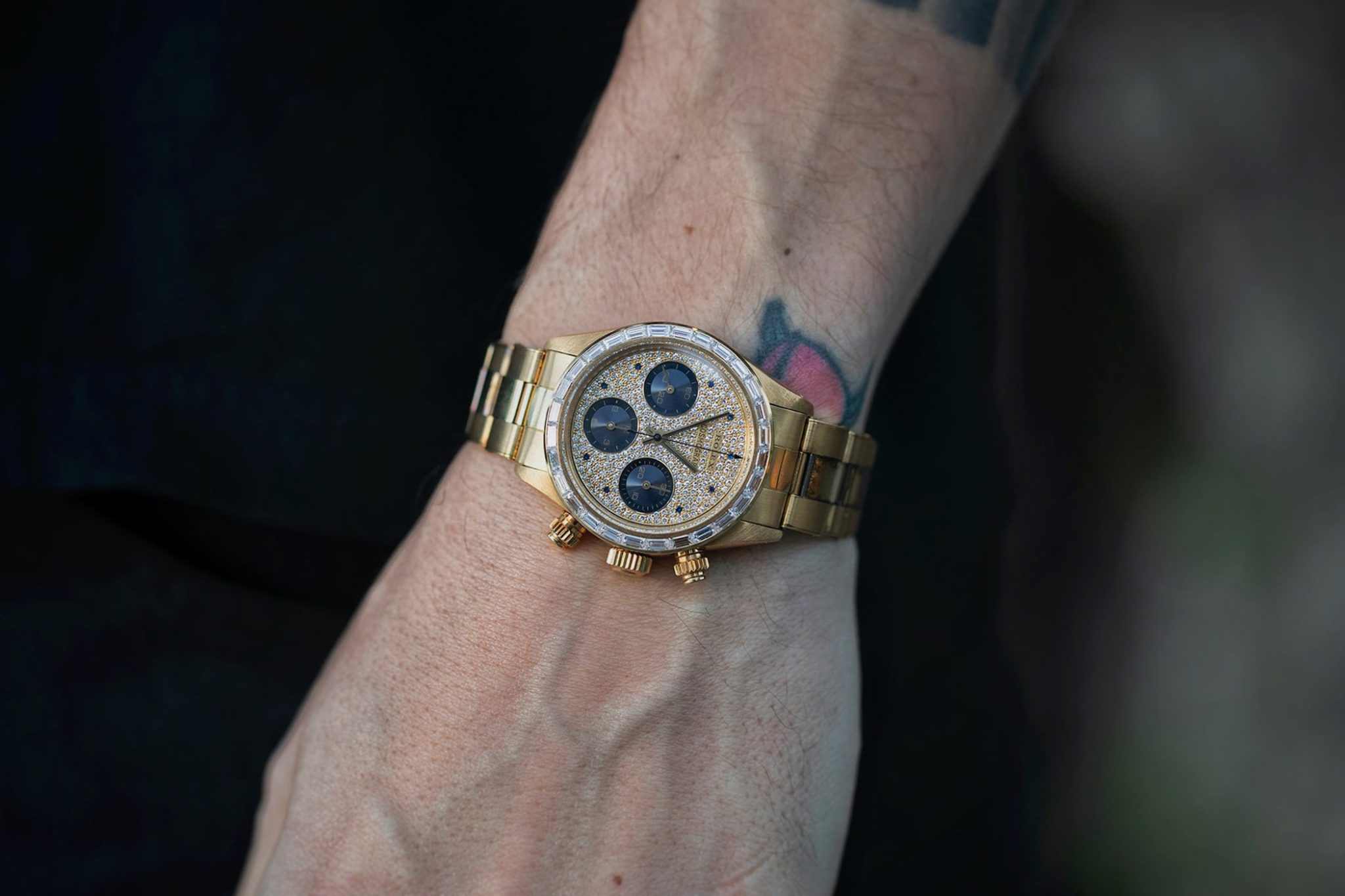
Fotocredit: Hodinkee
Also Kevin Hart is a proud owner of a Rainbow Daytona (he actually owns several Daytonas), as well as Post Malone, and Adam Levine (who also owns a “Paul Newman” Daytona). Meanwhile, Jay Z wears the steel and ceramic Daytona Ref. 116500LN, while Victoria Beckham shows how well it wears on women with her Everose Daytona, Ref 116505. Likewise, Rosie Huntington-Whiteley pulls off both of her Daytona models, which include a rose-gold model and the steel Ref. 116520. Meanwhile, fans of platinum Daytonas include John Legend and Michael Jordan.
Does the Rolex Daytona have competition?
It would be wrong to say that the Daytona has any competition, even today. The unique model is in a league of its own. However, it is worth taking into account its historical contemporaries from the time of its inception. Like Rolex, other horology houses took advantage of the rising interest in motorsports throughout the 60s and beyond.
OMEGA Speedmaster
For one thing, OMEGA’s Speedmaster started life as a racing chronograph, with OMEGA releasing advertisements of the watch on the wrist of drivers. As is the case with models such as the “Paul Newman” Daytona references, there are still collectable Speedmaster “Racing dial” models from the late 60s, such as the Ref. 145.022-68 and Ref. 3570.40. Today, the Speedmaster is first and foremost known as the “Moonwatch”, but that isn’t to say it’s one of the most respected chronograph watches out there.
In 2020, OMEGA achieved a real coup when they launched the Speedmaster Moonwatch with the 321 caliber, which is so popular among collectors. The reference 311.30.40.30.01.001 is pretty close to the original that Ed White wore on his wrist during his first spacewalk in 1965. Fans of the iconic watch were thrilled not only because of the vintage-inspired caliber 321, but also for its subtle external details such as the “Dot over 90” at 12 o’clock or the applied OMEGA logo. Each caliber 321 is assembled in the manufacture by one and the same watchmaker. This automatically limits the production of the watch, although it is not considered a limited edition.

Then in 2021 the next coup: OMEGA equipped the Moonwatch with a co-axial escapement movement for the very first time. The caliber 3861 is METAS certified, which makes it a master chronometer. With a list price of 12,900 euros (OMEGA Speedmaster Moonwatch 321), OMEGA plays in the league of Rolex’s Daytona in terms of price and quality – and at the same time is much rarer. The standard OMEGA Speedmaster Moonwatch Professional Co-Axial Master Chronometer from 6,100 euros even offers a very competitive alternative.
TAG Heuer Carrera
TAG Heuer’s Carrera also has a strong story of its own. similarly to the Daytona, the roots of its name lie with a racing event, which is no longer in existence – the infamously perilous Carrera Panamericana in Mexico. What’s more, Rolex and TAG Heuer initially used the same dial manufacture, Singer, for their respective chronograph models. As a result, features on Carrera watches from the 60s include thin, beveled baton markers – just like on the Rolex Daytona. Again, the Carrera models are also arguably (and admittedly niche) collector’s pieces, with “panda” dial editions from the 60s currently going for around 5,000 to 7,000 euros. By contrast, a modern Carrera starts at a slightly lower price, at around 4,495 euros.
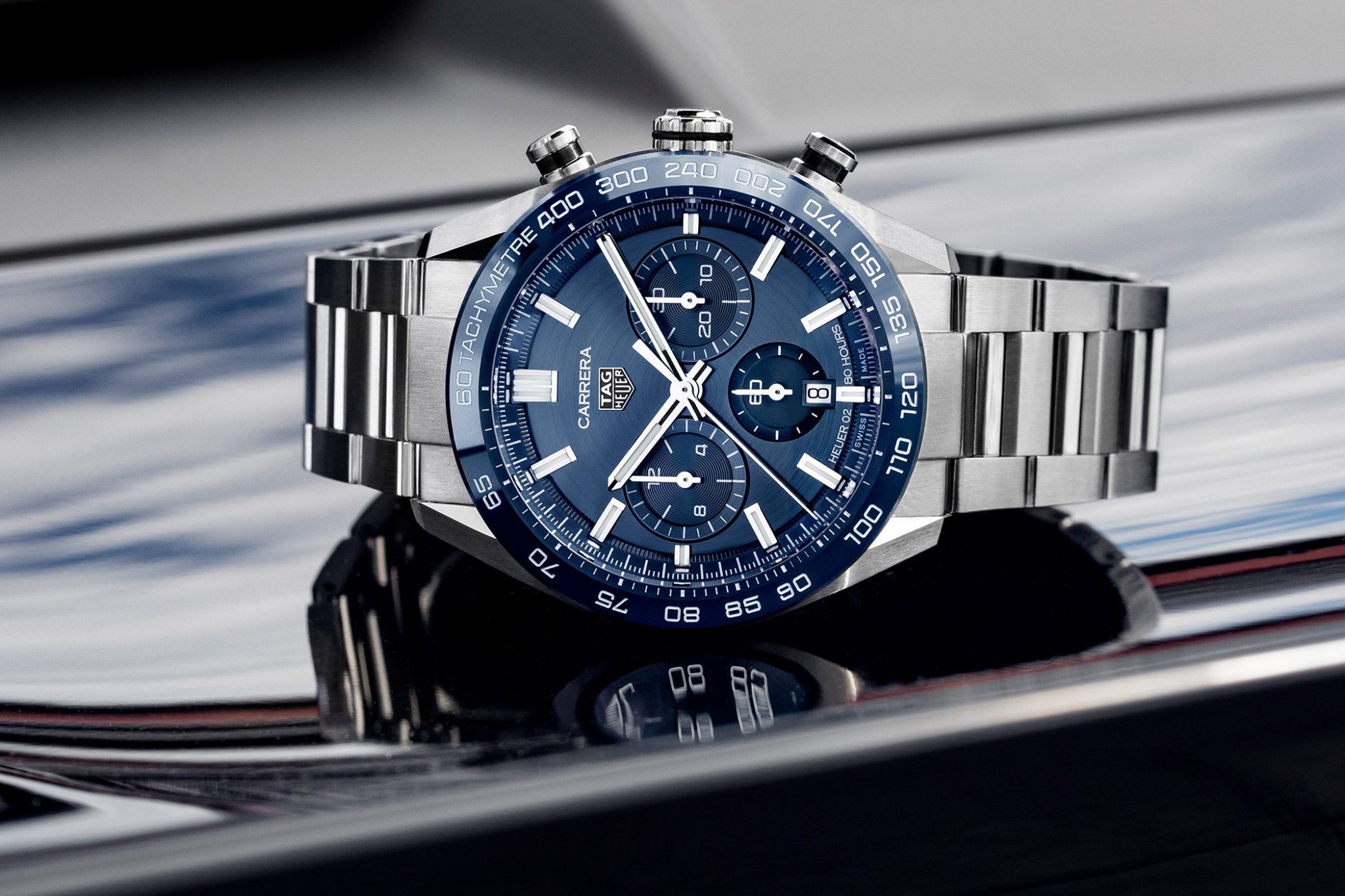
Breitling Chronomat
Breitling’s Chronomat (a portmanteau of combines chronograph and automatic) was introduced commercially in 1984 and famously marked the return of the mechanical chronograph. With its famous “Rouleaux” bracelet, the model’s clients included the Renault F1 Team back in the 90s (now known as the Alpine F1 Team). Back in 2009, the collection became the first Breitling to use the brand’s Manufacture Chronograph Caliber 01. Last year, it drew global attention again as the Breitling endeavoured to redesign the iconic watch “for a new era”.
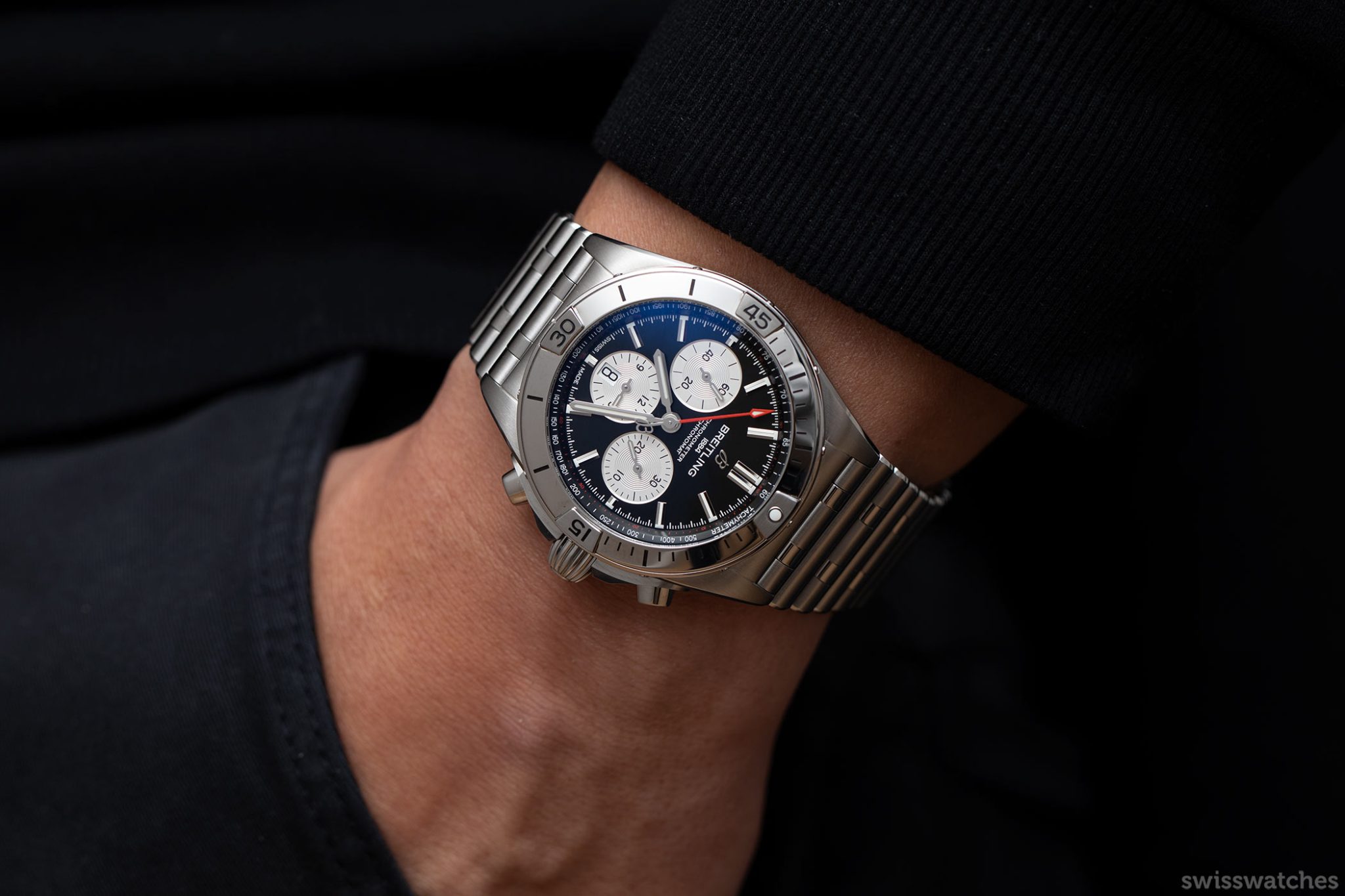
Zenith Chronomaster Sport
Meanwhile, Zenith’s new Chronomaster Sport is put up against the Daytona all too often. Powered by the El Primero Calibre 3600, many see it as strikingly similar to the Rolex chronograph – at least at first glance. This has created a marmite effect, with some seeing it as an opportunity, and others as a knock-off. One obvious difference is the Chronomaster Sport’s overlapping subdials, which take inspiration from the original El Primero model.
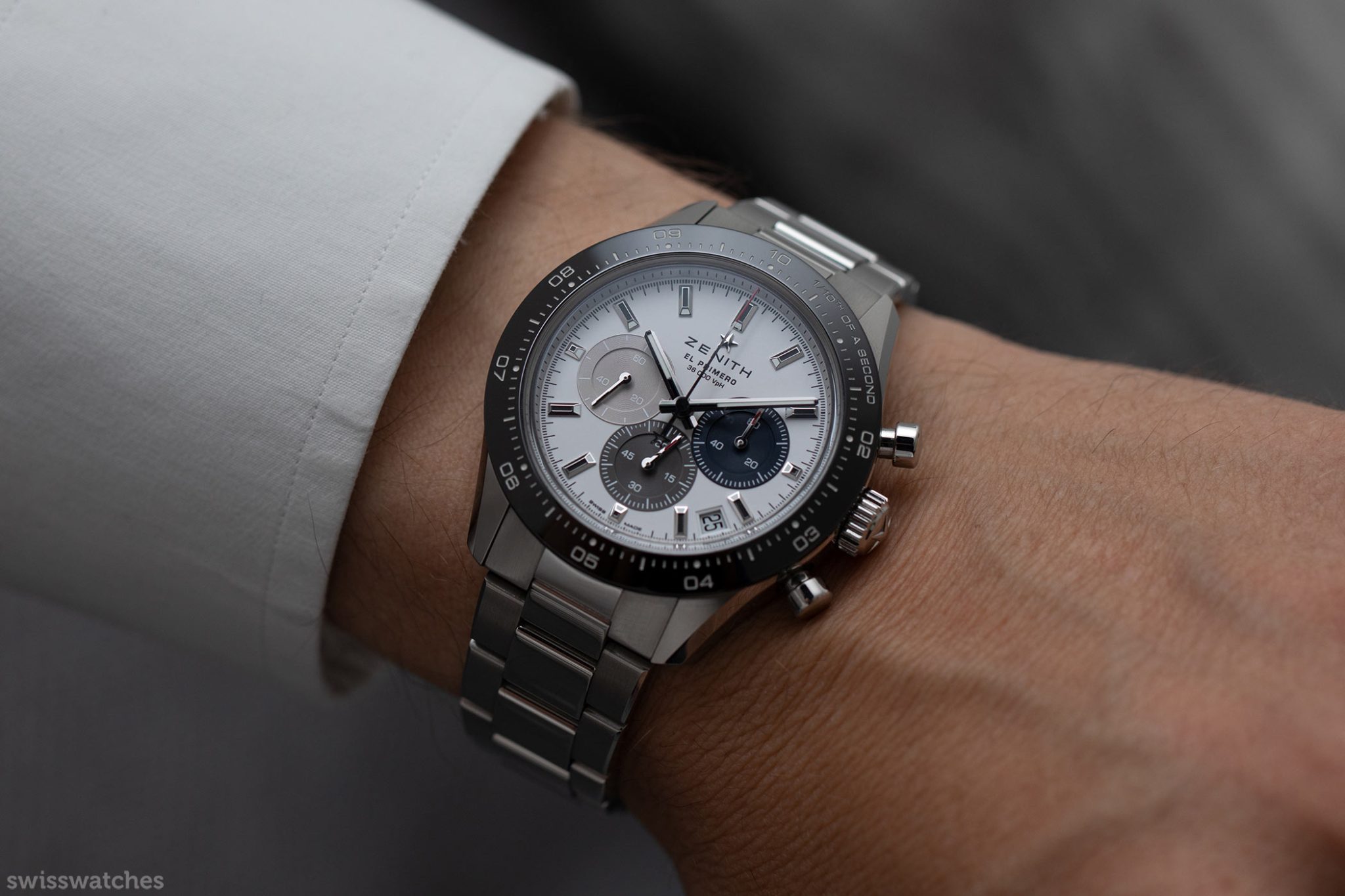
While the vastly differing price ranges and varying histories make these watches dissimilar to the Daytona (meaning comparison is impossible), they are a much more affordable option if you’re looking for a Swiss-made racing piece. Additionally, they are also not only excellent chronograph watches, but also much more available.
What role does the watch play today?
As explained – and is often the case with ‘Professional’ models – the Daytona is mostly worn for everyday use as opposed to racing. Nevertheless, it is the Daytona’s role in motorsports that first made its name. Furthermore, this heritage remains a strong part of its appeal, as well as part of Rolex’s story. Additionally, the Daytona unites two great loves of many men: cars and watches. This is one reason that the model and the sport are inextricably and eternally linked. The Daytona’s journey on the wrists of the likes of Paul Newman and Jackie Stewart have immortalised the model, not to mention captured the imagination of admiring men, who revere the fast-paced lifestyle of these legends, forever.
It’s impossible to imagine the Rolex horology house without the Daytona. While models like the Submariner are perhaps the most popular, the Daytona is the most desired. It fixates people. The model also embodies what Rolex is all about. It’s an all-encompassing watch; a status symbol, a collector’s piece, an achievement, a piece of history, a feat of watchmaking, an emblem of connections, masculinity, power – the list goes on.
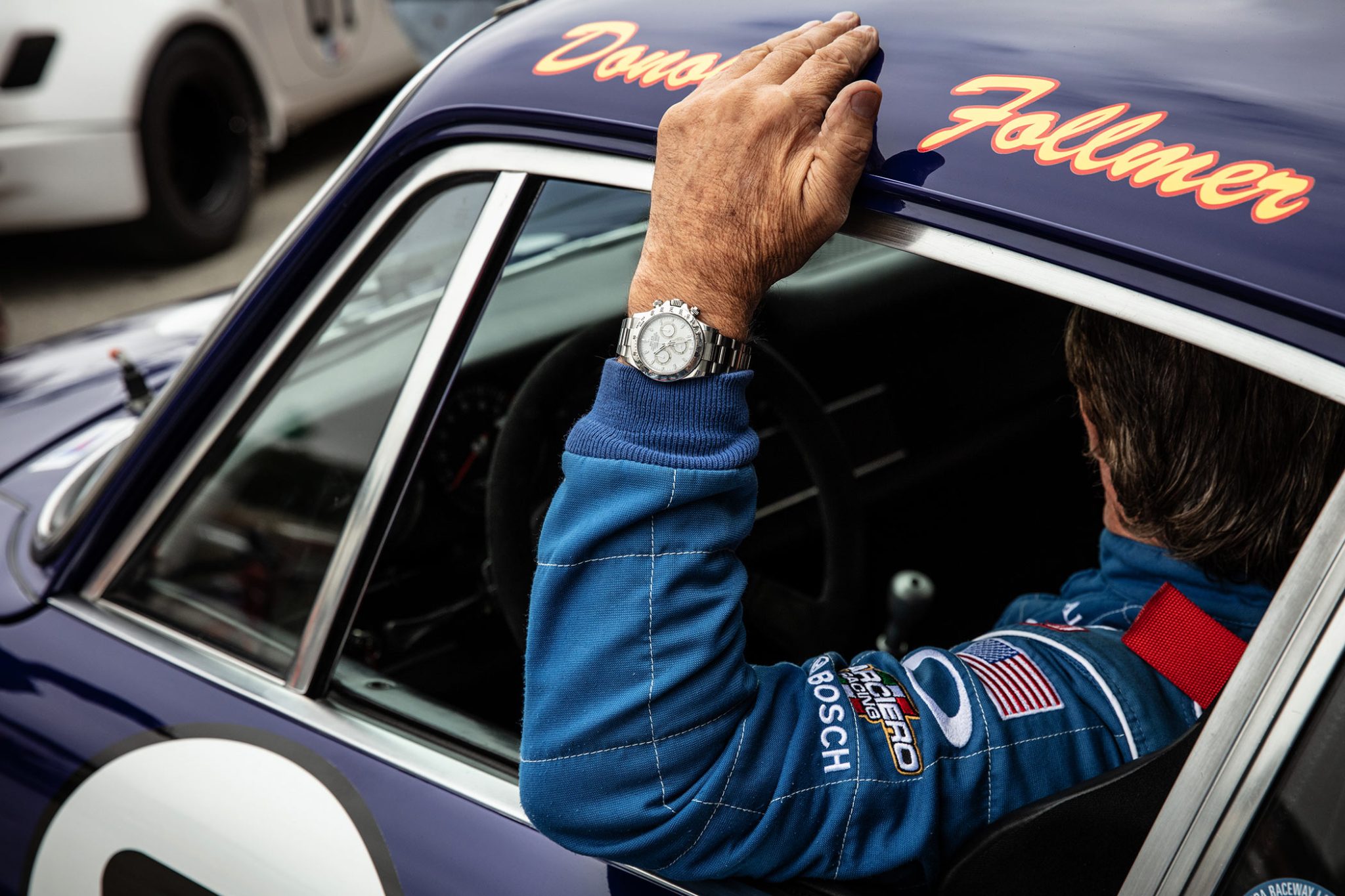
While any Rolex commands a level of interest and respect, owning a Daytona makes many men feel they’ve reached nirvana in the watch world. This isn’t to say that money, or even objects, can buy us happiness. However, the Daytona is the Swiss brand’s ultimate physical and enduring embodiment of what every Rolex watch symbolises; prosperity and success. As the life-long Daytona wearer and racing legend Jackie Stewart put it: “When I’d wear my watch, I felt as if I was moving up in life.”
